Forums
- Forums
- Axis And Allies Forum
- General Discussion
- Aviation News
Aviation News
Post a reply
- Go to Previous topic
- Go to Next topic
- Go to Welcome
- Go to Introduce Yourself
- Go to General Discussion
- Go to Screenshots, Images and Videos
- Go to Off topic
- Go to Works in Progress
- Go to Skinning Tips / Tutorials
- Go to Skin Requests
- Go to IJAAF Library
- Go to Luftwaffe Library
- Go to RAF Library
- Go to USAAF / USN Library
- Go to Misc Library
- Go to The Ops Room
- Go to Made in Germany
- Go to Campaigns and Missions
- Go to Works in Progress
- Go to Juri's Air-Raid Shelter
- Go to Campaigns and Missions
- Go to Works in Progress
- Go to Skinpacks
- Go to External Projects Discussion
- Go to Books & Resources
-
 Main AdminU.S. Air Force Airmen assigned to the 94th Fighter Squadron, Joint Base Langley-Eustis, Virginia, and the 36th Airlift Squadron, Yokota Air Base, Japan, perform a hot refuel on two F-22 Raptors during a Dynamic Force Employment out of Andersen Air Force Base, Guam, Nov. 24, 2020. DFE is an operational platform that allows our forces to be strategically predictable and operationally unpredictable. The U.S. Air Force is postured and ready to respond to crises and contingencies throughout the U.S. Into-Pacific Command, contributing to regional stability and a free and open Indo-Pacific. (U.S. Air Force photos by SrA Katelin D. Britton)
Main AdminU.S. Air Force Airmen assigned to the 94th Fighter Squadron, Joint Base Langley-Eustis, Virginia, and the 36th Airlift Squadron, Yokota Air Base, Japan, perform a hot refuel on two F-22 Raptors during a Dynamic Force Employment out of Andersen Air Force Base, Guam, Nov. 24, 2020. DFE is an operational platform that allows our forces to be strategically predictable and operationally unpredictable. The U.S. Air Force is postured and ready to respond to crises and contingencies throughout the U.S. Into-Pacific Command, contributing to regional stability and a free and open Indo-Pacific. (U.S. Air Force photos by SrA Katelin D. Britton)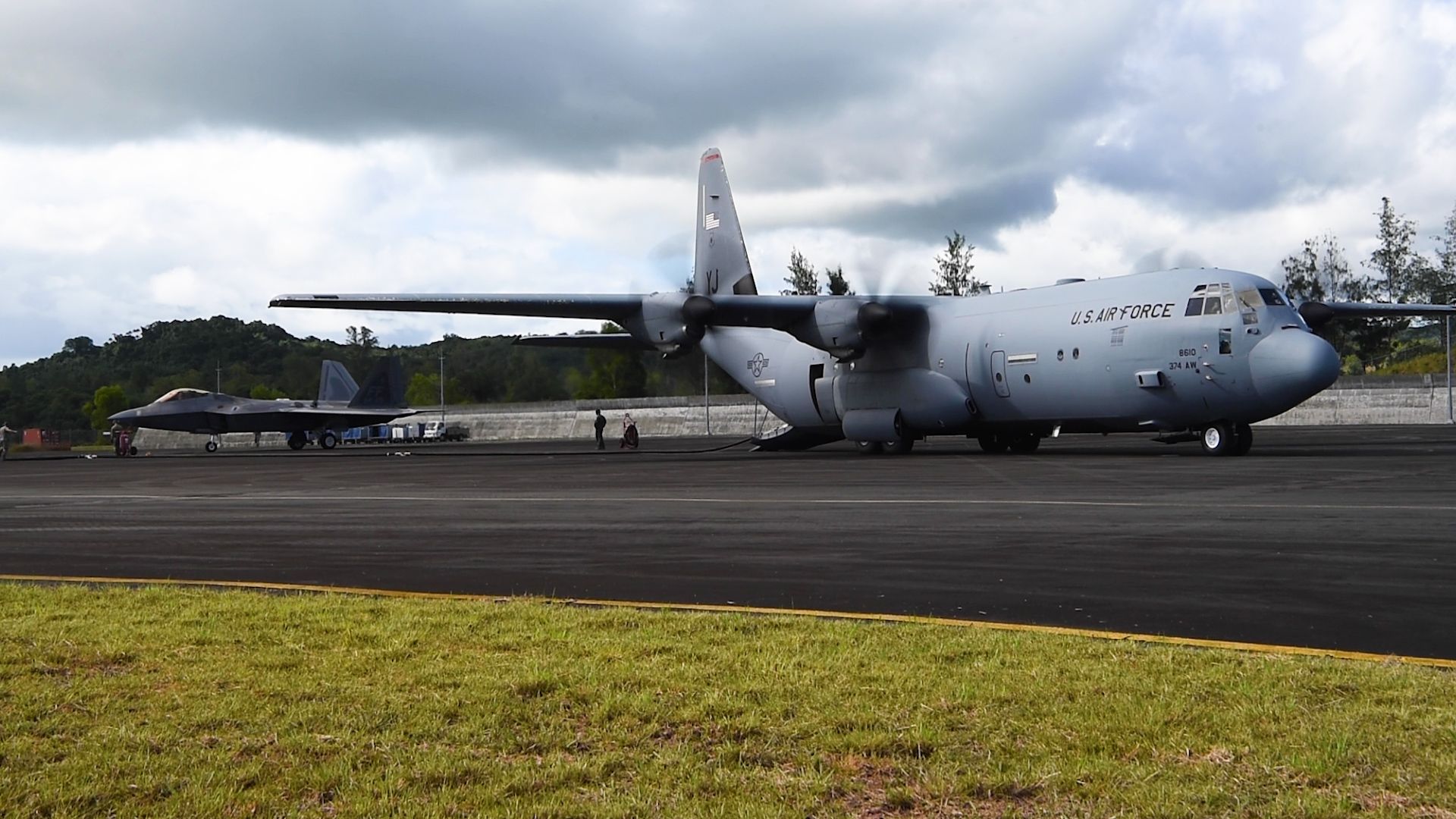
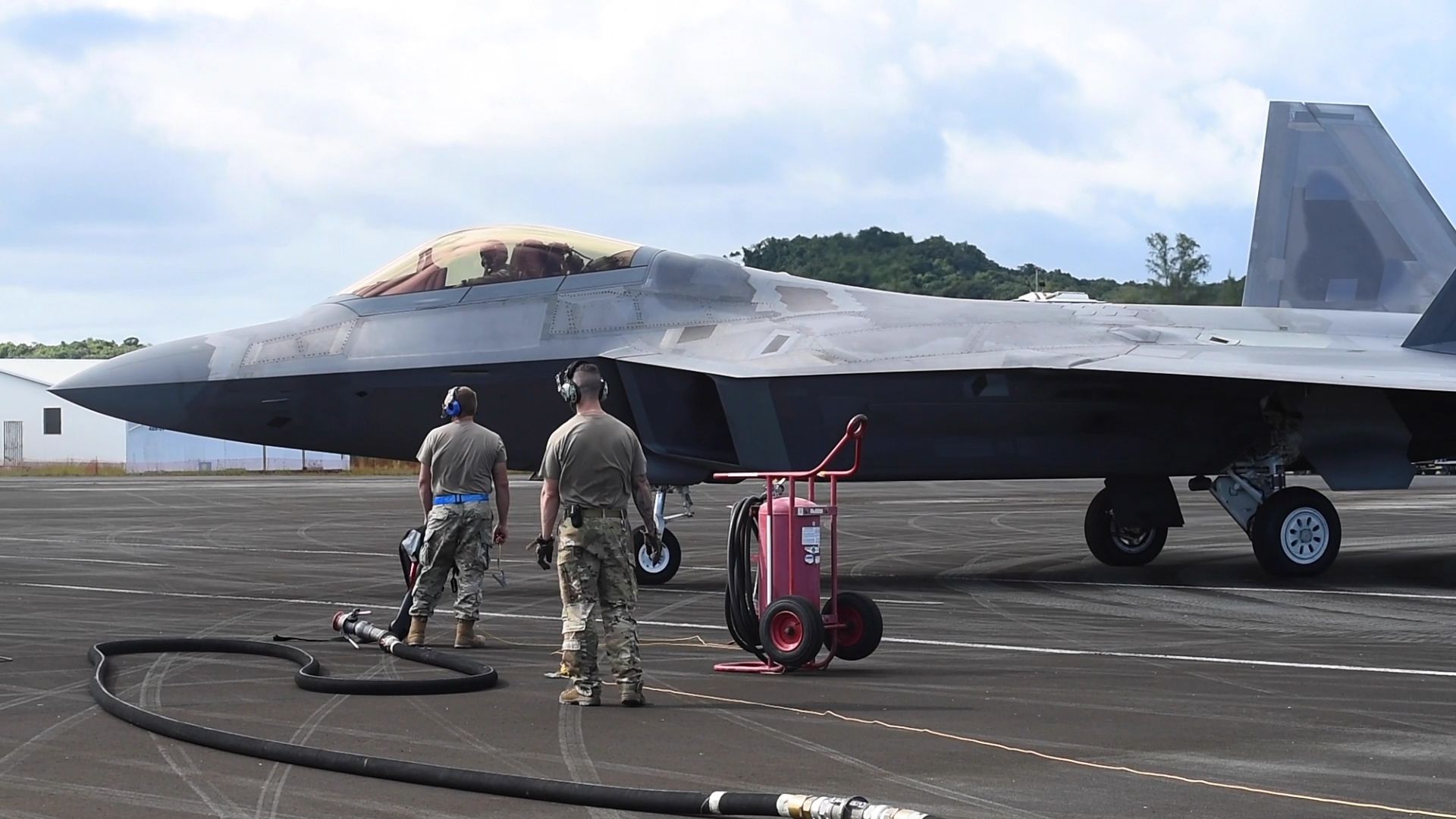
Donauw?rth, 26 November 2020 - The German Bundeswehr has ordered 31 NH90 helicopters, to be known as Sea Tiger, for the German Navy?s shipborne operations. Nathalie Tarnaud-Laude, President of NH90 Helicopter Industries (NHI) and Giorgio Gomma, General Manager of the NATO Helicopter Management Agency (NAHEMA), on behalf of the Federal Office for Equipment, Information Technology and In-Service Support of the German Armed Forces (BAAINBw) signed the contract on 26 November. The helicopters will replace the German Navy?s Sea Lynx Mk88A fleet which entered into service in 1981. The Bundeswehr has already ordered 18 NH90 Sea Lion naval transport helicopters, seven of which have already been delivered.
"With the Sea Lion and Sea Tiger, the German Navy will have state-of-the-art, high performance helicopters and can benefit from the advantages of a harmonized fleet," said Bruno Even, CEO of Airbus Helicopters. ?We look forward to working, together with our partners, to deliver the unique naval capabilities that the NH90 NFH has to offer as early as 2025,? he added.
The widespread use of the NH90 TTH by the German Army and the NH90 NFH by the German Navy enables considerable synergies in terms of logistics and training. Naval flight crews and technical staff have already been undergoing basic NH90 training together with Army?s NH90 crews since the introduction of the Sea Lion.
Both the Sea Tiger and the Sea Lion are derivatives of the NH90 NFH. The Sea Tiger is based on the Sea Lion configuration, enhanced by mission capabilities and equipment in order to carry out their specific tasks. In addition to reconnaissance and transport, the shipborne Sea Tigers missions include engaging targets above and below the surface. For this purpose, the Sea Tiger is, amongst others, equipped with an active dipping sonar, passive sonar buoys, and weapons (torpedoes and missiles).
100 naval NH90 helicopters have already been delivered to six nations and have completed over 70,000 flight hours in search and rescue, humanitarian, and military operations. There are currently 430 NH90 helicopters in service worldwide that have accumulated over 270,000 flight hours.
S?o Jos? dos Campos, Brazil - November 26, 2020 - With the main goal of supporting customers of the 50-seat ERJ 145 jet in their search for solutions to increase passenger safety and prevent the potential transmission of viruses on board, Embraer recently released a Service Bulletin that allows ERJ 145 operators to install high-efficiency particulate air (HEPA) filters. The kits for the first 70 aircraft are already being assembled and should be delivered by mid-December.
?At Embraer, we are always focused on our customer, on how to better support them and how to further improve our products. Given the moment we are living, developing a HEPA filter service bulletin for the ERJ 145 is a must-have solution Embraer developed for making cabin conditions even safer for passengers,? explains Johann Bordais, President and CEO of Embraer Services & Support.
It took about five and a half months to develop this solution. During that time, Embraer selected the filter and worked through the necessary steps to create the service bulletin, manufacturing and purchasing several of the required parts to develop the kits. Additionally, Embraer is expecting to complete the same initiative for the ERJ 135 and ERJ 140 very soon.
In most aircraft, the air in the cabin is completely refreshed between 20 and 30 times per hour, which is significantly more often than in an office environment and even five to six times more often than in a hospital environment. HEPA filters, which are standard on all versions of the Embraer E-Jets and E-Jets E2 families of commercial aircraft, are extremely efficient, capturing 99.97% of airborne particles and other biological contaminants, such as bacteria, viruses, and fungi.
This technology is also available on Embraer Executive Jets, with the HEPA filter now standard on both the Praetor 500 and Praetor 600.
Earlier this year, Embraer also approved the use of MicroShield360, a preventive coating system that, when applied to aircraft cabin surfaces, continuously inhibits the growth of microbes. The combination of these new features, with the existing cabin environment technologies, equates to a higher level of protection for passengers.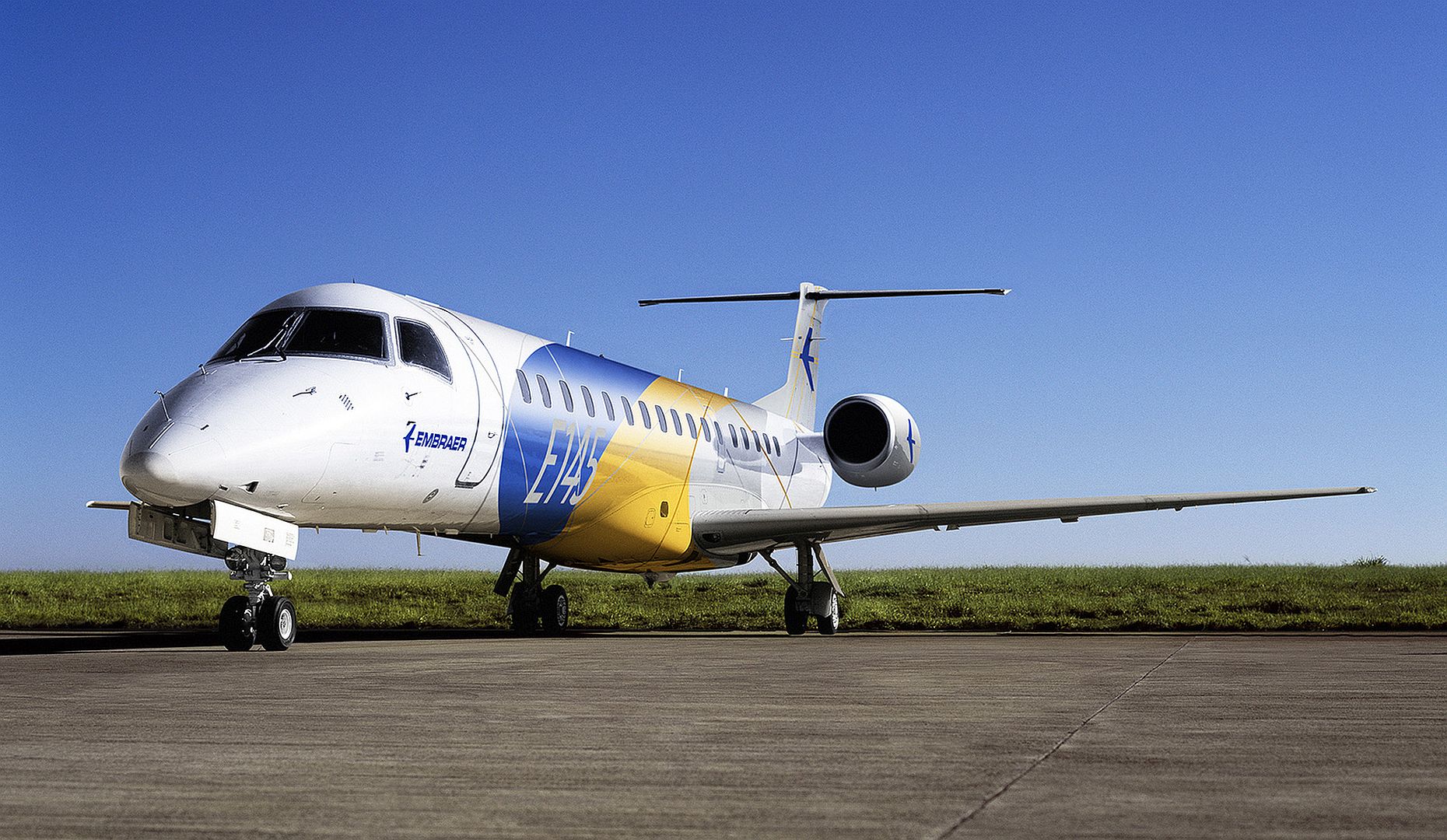
A T-38 Talon from the 87th Flying Training Squadron assigned to Laughlin Air Force Base fly low levels over Big Bend National Park, Texas during a training sortie Nov. 20, 2020. The 87th FTS, known as the Red Bulls, train both U.S. Air Force and allied nation pilots in undergraduate pilot training in preparation to move onto flying more advanced aircraft. The squadron is one of the oldest in the United States Air Force and its lineage goes back to the 87th Aero Squadron which was active in 1917. (U.S. Air Force photos by Master Sgt JT May III)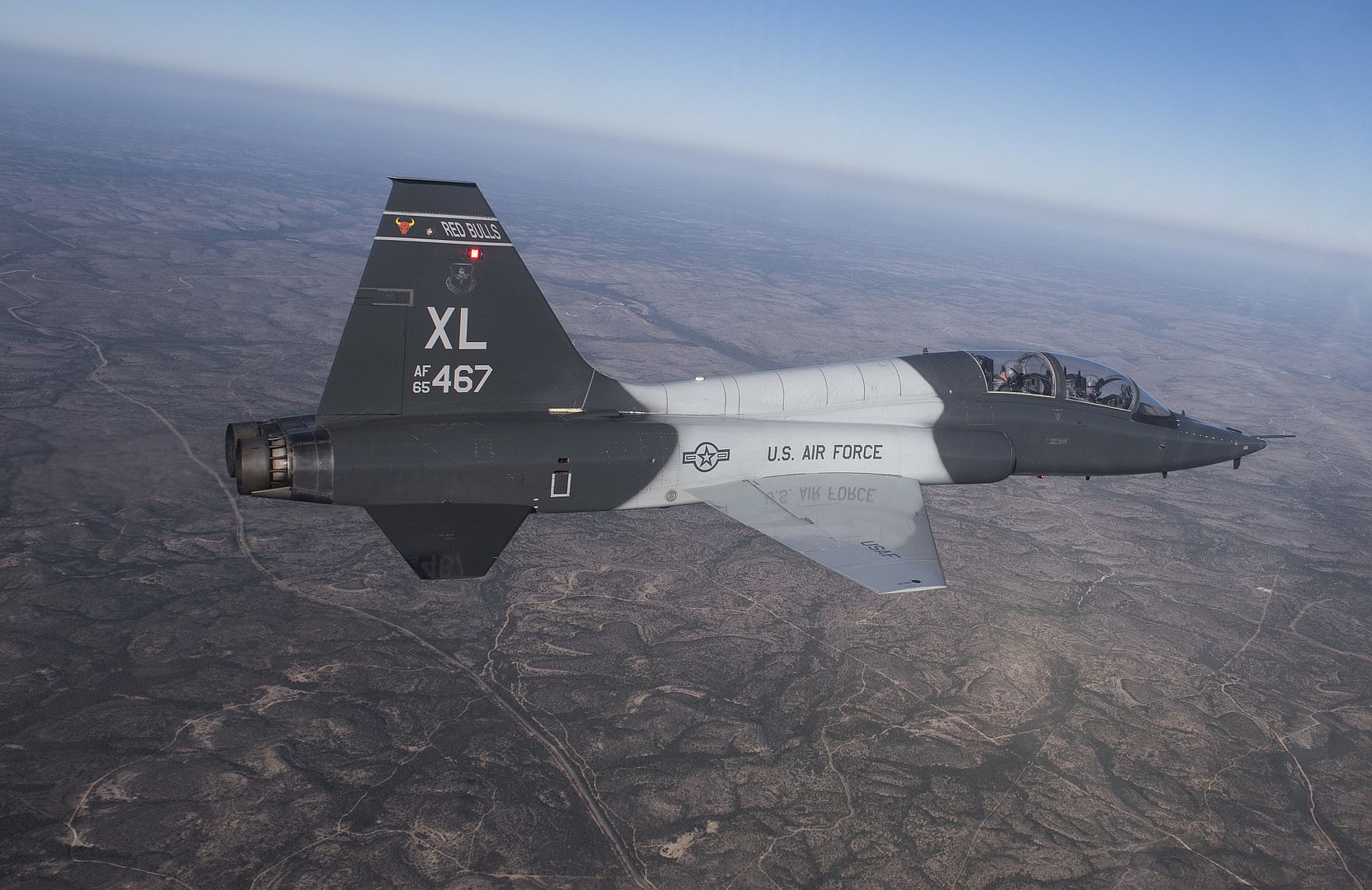
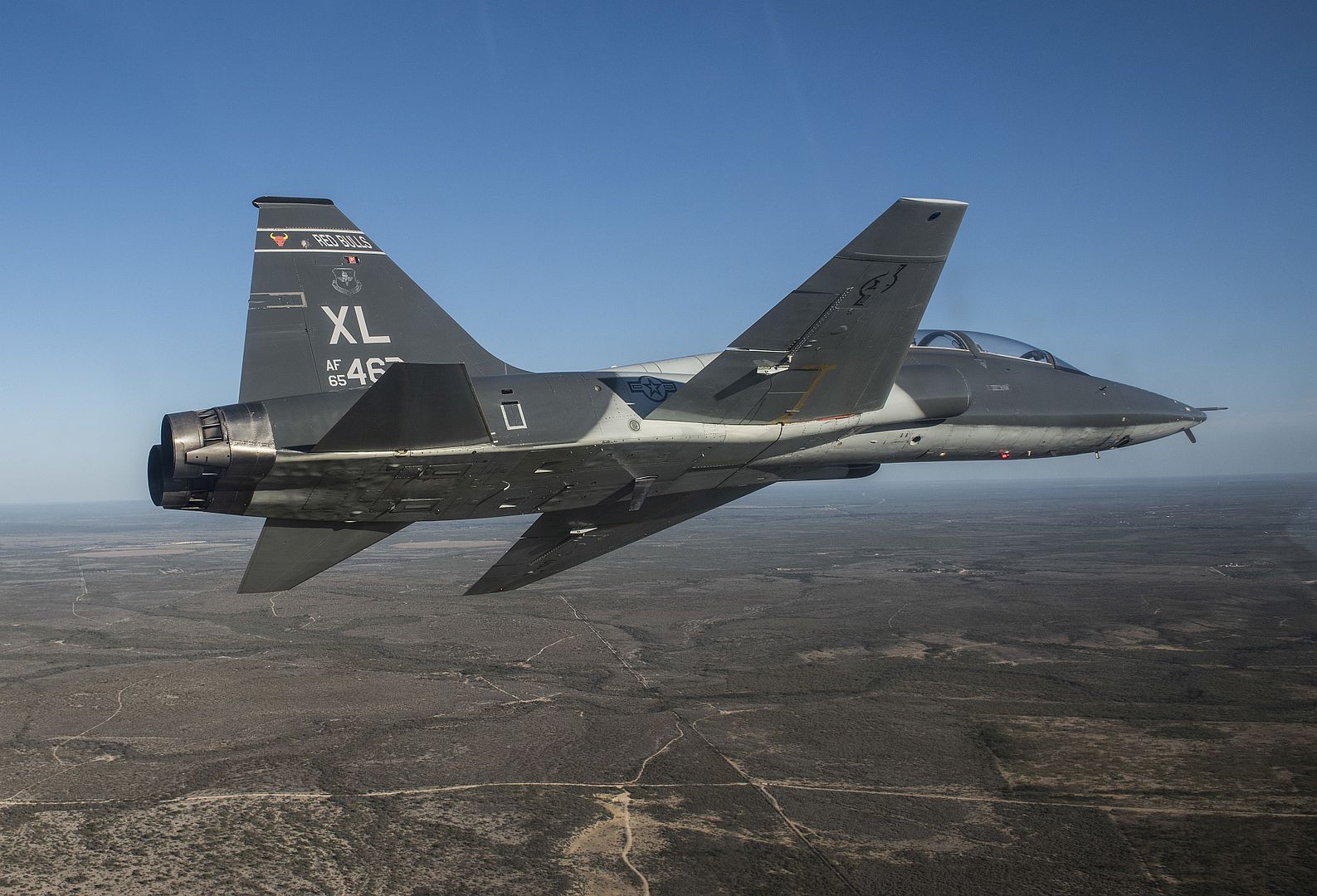
-
 Main AdminNELLIS AIR FORCE BASE, Nev. (AFNS) -- While the U.S. Air Force Weapons School Integration, or WSINT, has not deviated much from its original training model, today?s training approach has taken a new form.
Main AdminNELLIS AIR FORCE BASE, Nev. (AFNS) -- While the U.S. Air Force Weapons School Integration, or WSINT, has not deviated much from its original training model, today?s training approach has taken a new form.
WSINT is not only the capstone event students must pass to complete the U.S. Air Force Weapons School Weapons Instructor Course, but it is perhaps the most multi-faceted. WSINT generates capable leaders who can not only plan, integrate and dominate in any tactical setting but can also lead any spectrum of teams, who are ready to deliver strategic transformational change.
WSINT?s focus has shifted from simulating conflict with fictitious countries to simulating conflict with great power competitors.
In the past, instructors led student-devised oppositional forces during warfare exercises. But from Nov. 19 to Dec. 9, students will go head-to-head against one another simulating near-peer adversaries such as Russia and China, imbedding themselves in each other?s skirmishes. Instructors will rate and evaluate the engagements from the planning phases all the way to execution.
?Weapons School Integration is the capstone event for our Weapons School students before they graduate,? said Brig. Gen. Michael Drowley, 57th Wing commander. ?We still want to present to them challenging problem sets that force them to integrate, critically think and lead, but now we are trying to create an even stronger connection to the Great Power Competition, so they are armed and ready for any potential conflict or adversary.?
The U.S. Air Force Weapons School?s mission is to train tactical experts and leaders to control and exploit air, space and cyber on behalf of the joint force. The mission of the 57th Wing is to train, instruct and lead the Air Force by ensuring it can win any conflict now.
WSINT is an educational event that exposes students to a series of practical examinations. All examinations must be completed with a passing grade. The examinations test and refine each student?s ability to plan simulated conflict scenarios that will then be executed and evaluated immediately upon its completion.
?We?ve learned over time that our adversaries model their training after our own tactics as executed in theater. So, if we are training to win, we must learn how to defeat ourselves. We are our greatest competition,? said Col. Jack Arthaud, U.S. Air Force Weapons School commandant.
?Weapons School Integration prepares you for leadership and command in a number of ways,? Drowley said. ?You?re presented with an incredibly challenging problem set. The only way to be successful is to harness the capabilities of your team and integrate them successfully.?
(U.S. Air Force photo by Airman 1st Class Dwane R. Young)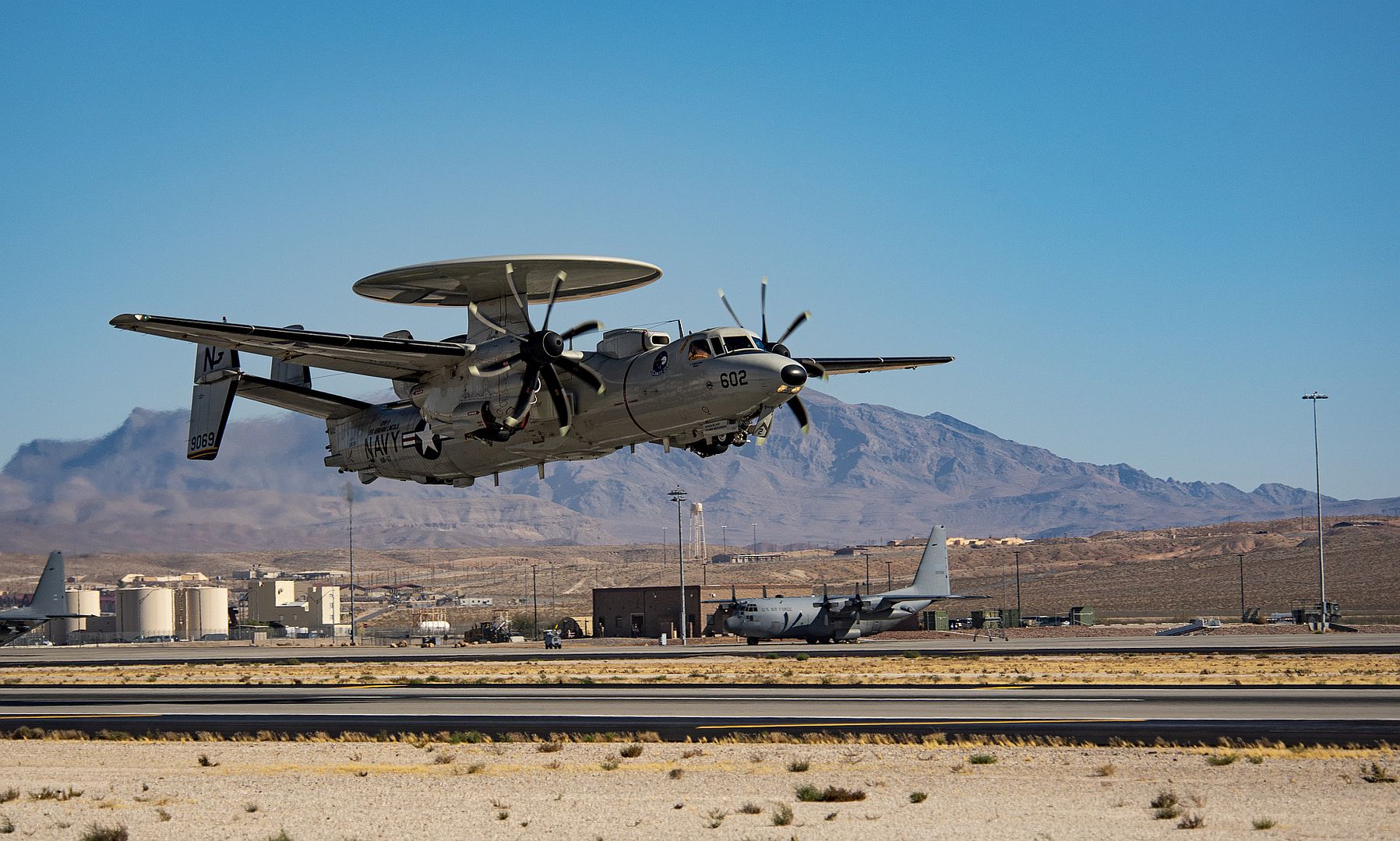
ARABIAN SEA (Nov. 27, 2020) An E/A-18G Growler, from the ?Cougars? of Electronic Attack Squadron (VAQ) 139, approaches the flight deck of the aircraft carrier USS Nimitz (CVN 68). Nimitz, the flagship of Nimitz Carrier Strike Group, is deployed to the U.S. 5th Fleet area of operations to ensure maritime stability and security in the Central Region, connecting the Mediterranean and Pacific through the Western Indian Ocean and three critical chokepoints to the free flow of global commerce. (U.S. Navy photo by Mass Communication Specialist 3rd Class Cheyenne Geletka/Released)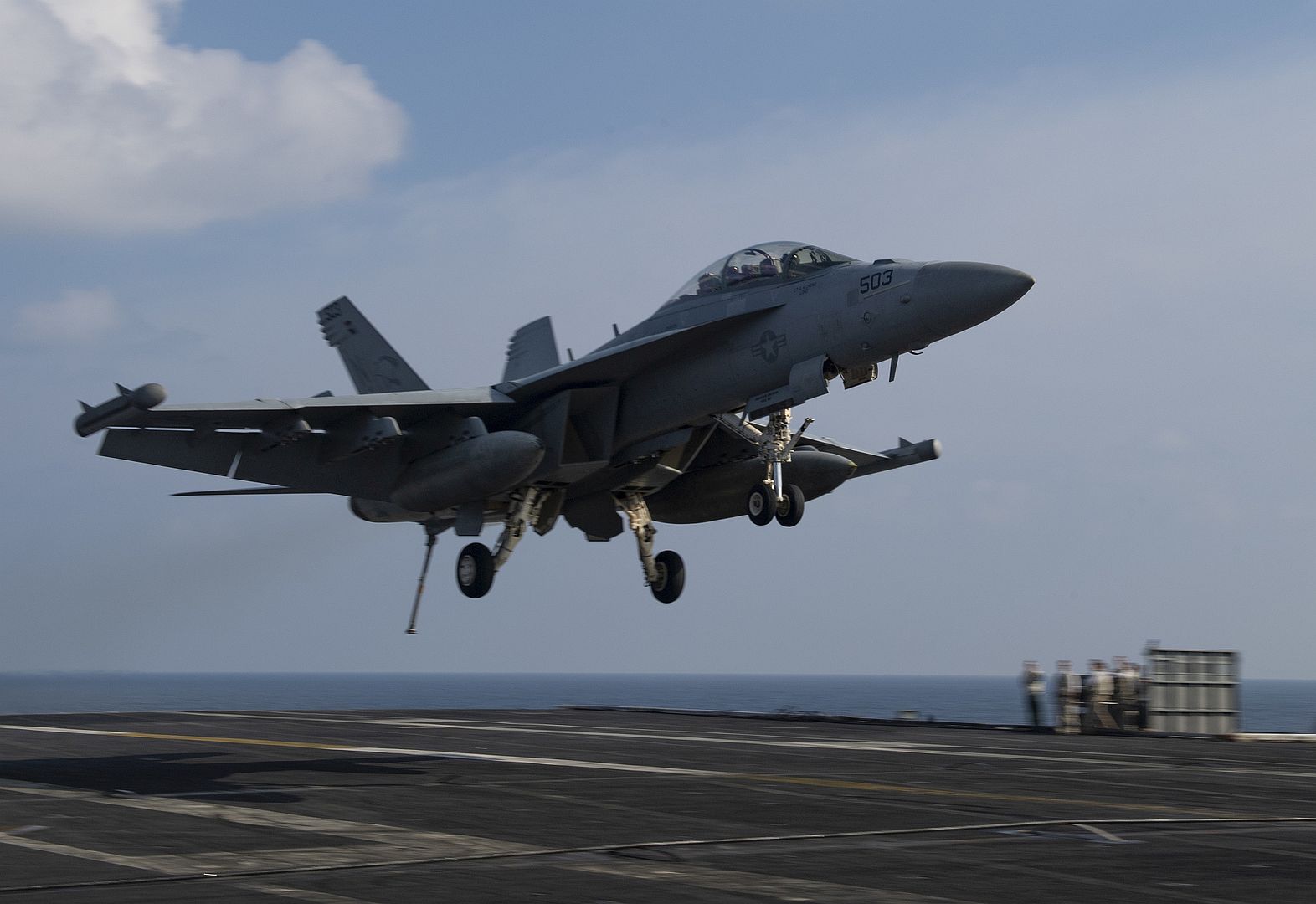
An F-15C Eagle sits on the flight line for maintenance during a ?Super Surge,? Nov. 18, 2020, at Kadena Air Base, Japan. The 44th and 67th Fighter Squadrons set a new record for the most F-15C Eagles flown in a week at 437 sorties; the previous record was 245 sorties. (U.S. Air Force photo by Airman 1st Class Rebeckah Medeiros)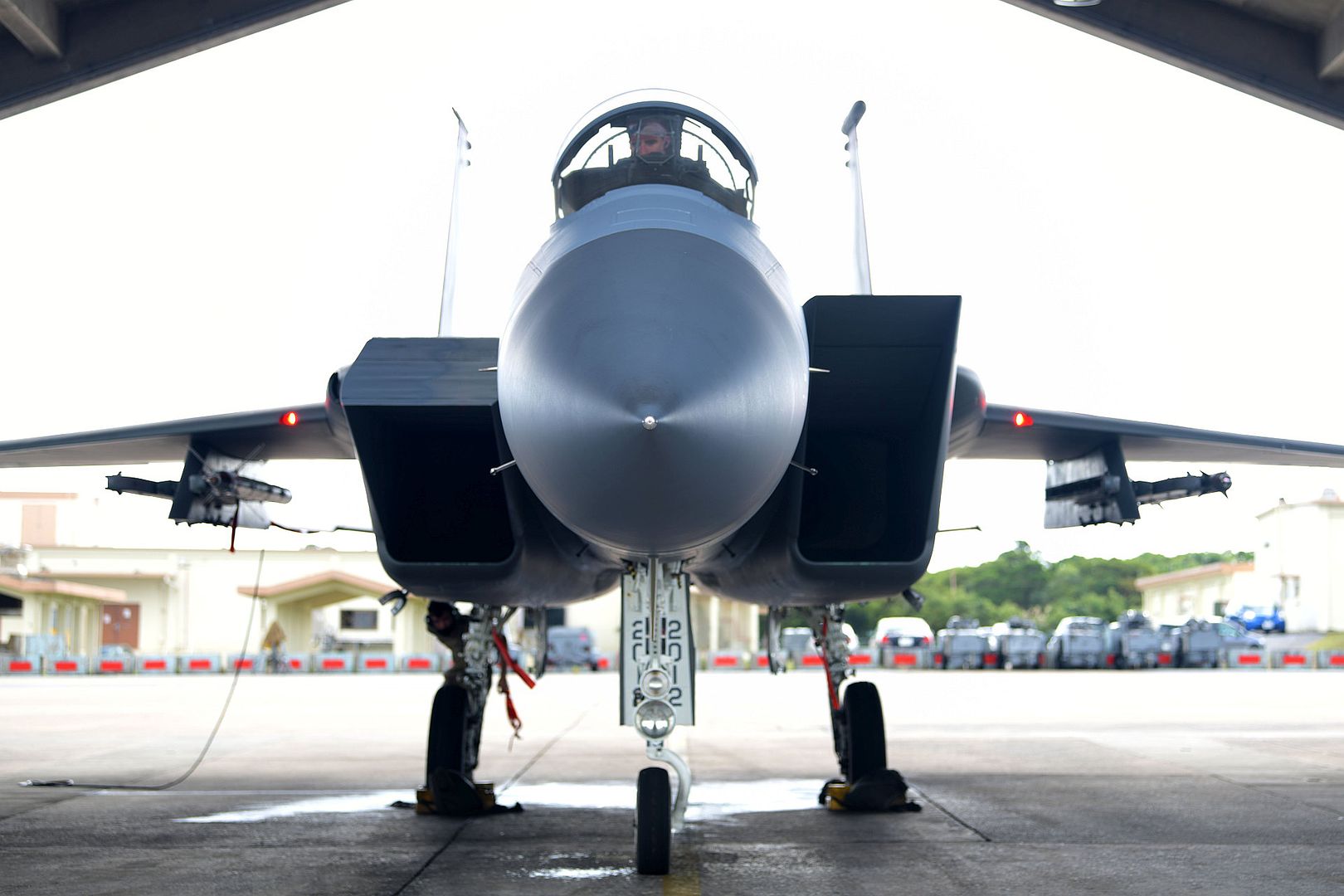
MISAWA, Japan (Nov. 30, 2020) EA-18G Growlers, assigned to the "Black Ravens" of Electronic Attack Squadron (VAQ) 135, taxi off the flight line at Misawa Air Base. VAQ-135 provides fully operational EA-18G aircraft to perform unrestricted Electronic Attack as needed throughout the world. (U.S. Navy photo by Mass Communication Specialist 2nd Class Jan David De Luna Mercado)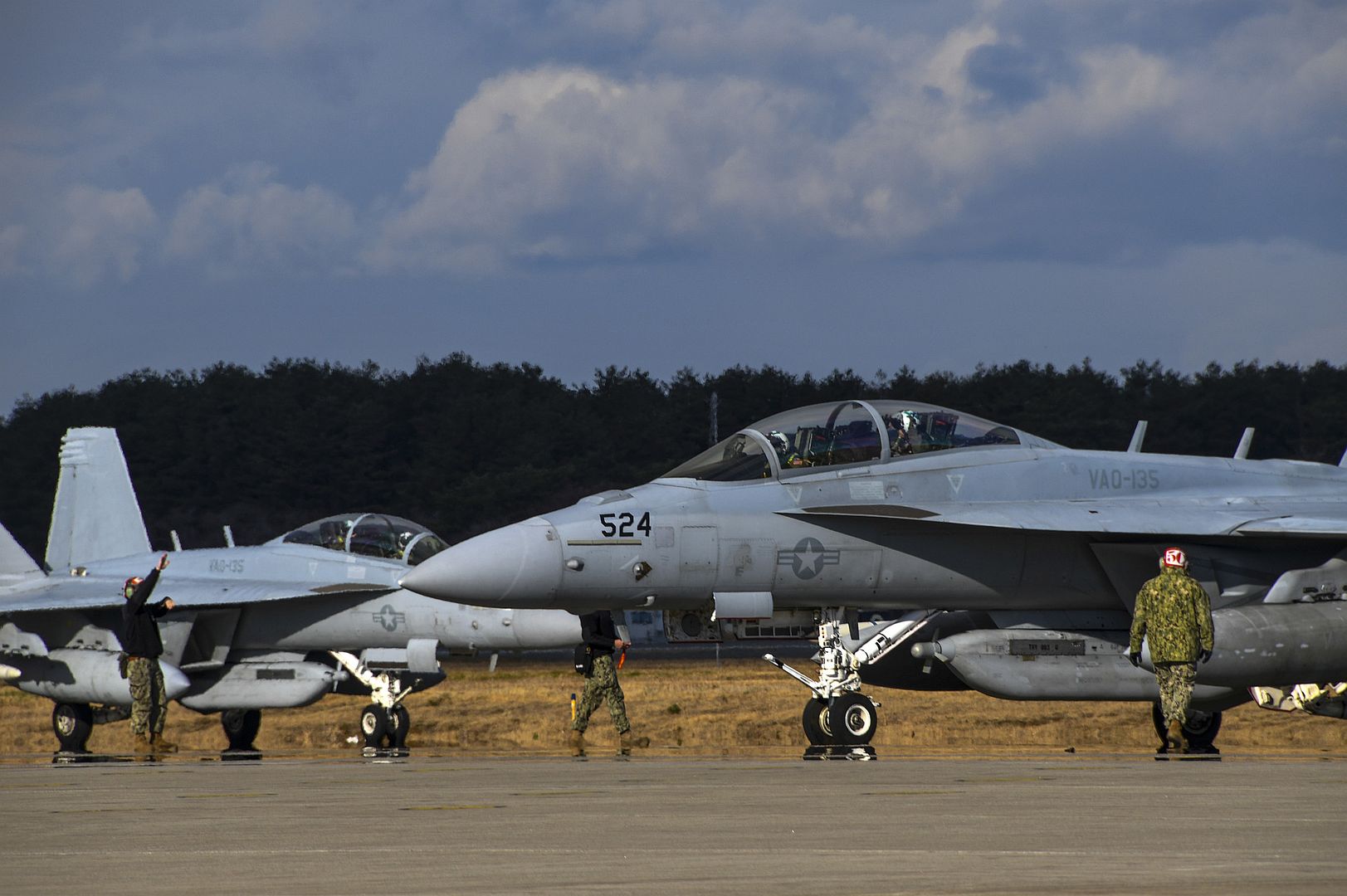
Gavi?o Peixoto, Brazil, November 27, 2020 ? In a ceremony held today at the Embraer facility in Gavi?o Peixoto (S?o Paulo, Brazil), Embraer delivered the first modernized EMB 145 AEW&C (Airborne Early Warning and Control), designated E-99, to the Brazilian Air Force (FAB). Four additional E-99 aircraft will be modernized as part of the contract.
?For Embraer, it is a privilege to continue meeting FAB?s needs to keep this robust and modern aircraft updated. It plays a strategic role in Brazil's defense system and has already proven its operational effectiveness,? said Jackson Schneider, President and CEO of Embraer Defense & Security. ?As part of Embraer's growth strategy for the coming years, we have invested in diversifying our business portfolio of defense and security with innovative solutions to better meet the defense global market needs, which goes far beyond our jets.?
The mission systems and related subsystems, including electronic warfare, command and control, electronic countermeasures, and aerial surveillance radar were updated as part of the modernization process, expanding FAB's capacity to carry out Flight Control and Alarm missions and Electronic Reconnaissance, among others.
The E-99M project is conducted by COPAC with support from Embraer and various international suppliers, such as SAAB, Aeroelectronica International (AELI), and Rohde & Schwarz. In addition to modernization, the project entails technology transfer agreements that will enable technological advancements for the Brazilian defense industry.
Atech, an Embraer Defense and Security company, participates in the development of the command and control system. Six mission planning and analysis stations were also acquired, which will be used for the training and improvement of crews.
Built on the successful ERJ 145 regional jet platform, with more than 1,200 units delivered and 30 million flight hours, the FAB E-99 aircraft can detect, track, and identify targets in their patrol area and transmit this information to allied forces. The aircraft can also perform airspace management, fighter positioning and interception control, signals intelligence, and surveillance missions.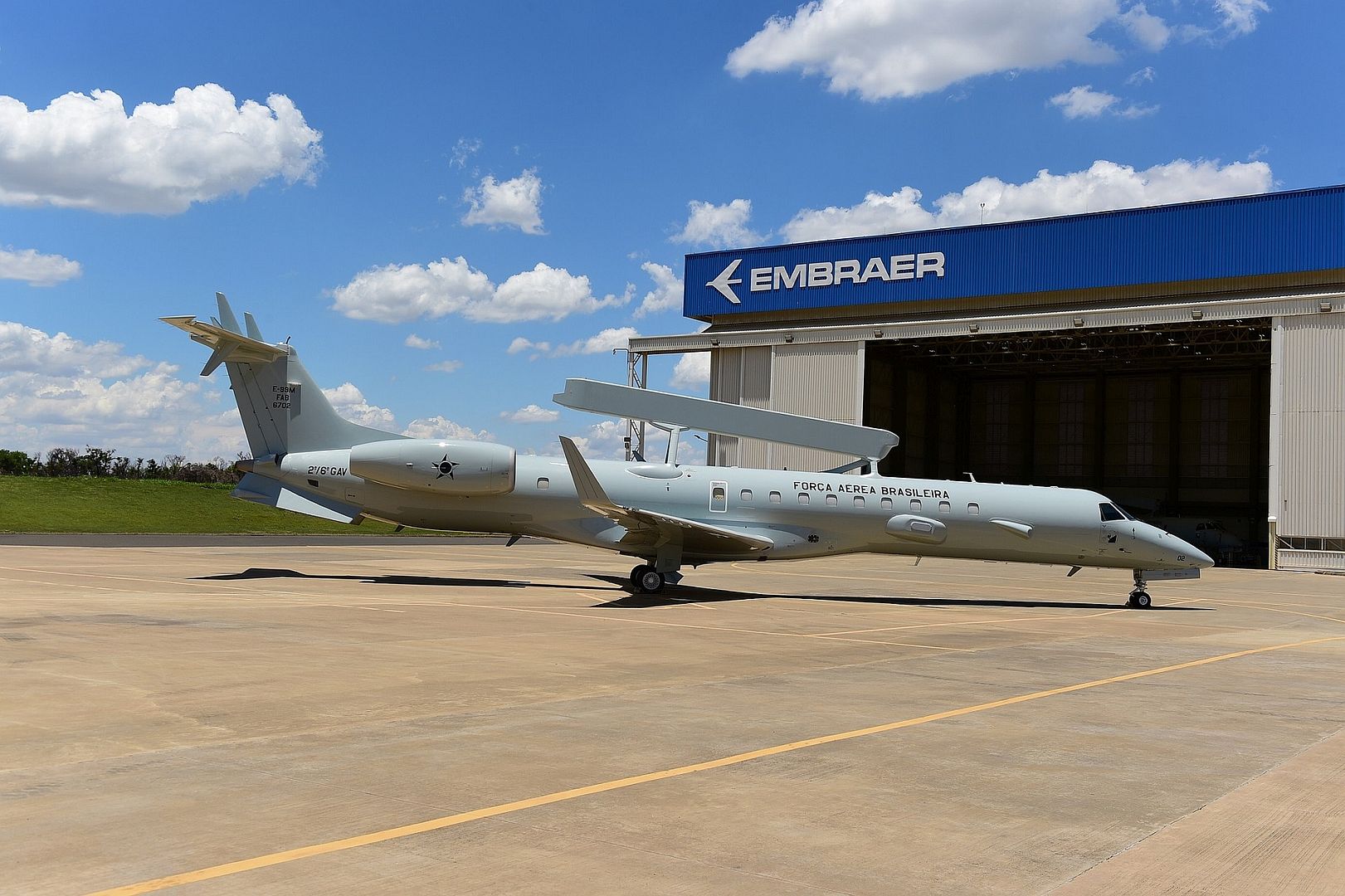
Melbourne, Florida, November 30, 2020 ? Embraer has delivered the first jet in a fleet of Praetor 600s to Flexjet. The aircraft will be used for the company?s burgeoning operations in Europe. Flexjet is the Praetor fleet launch customer, having received the first-ever Praetor 500 less than a year ago, in December 2019. The deal, valued at up to $1.4 billion, was announced at NBAA-BACE 2019 and comprises a fleet of Praetor 600s, Praetor 500s, and Phenom 300s.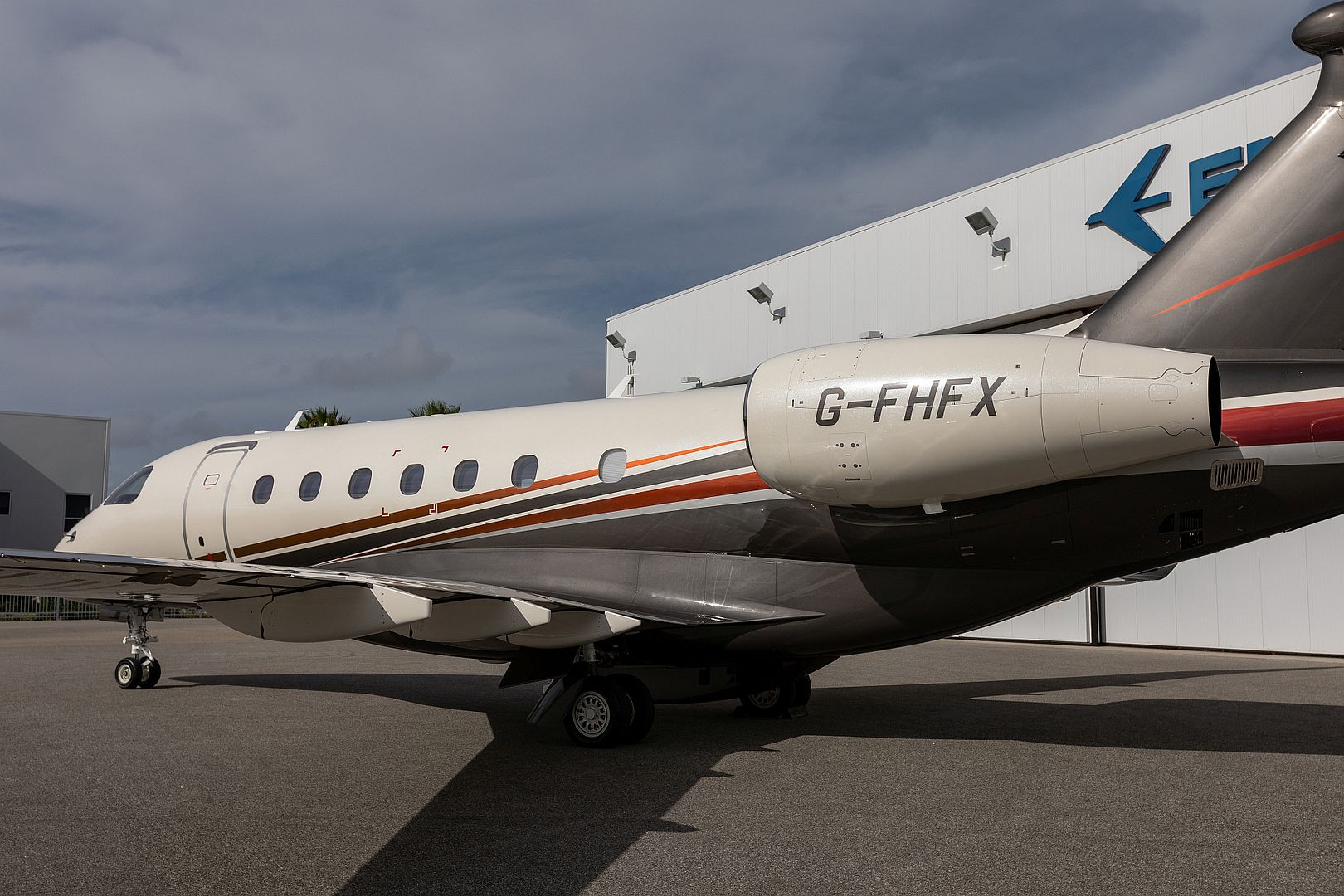
?We are honored to further execute on our commitment to Flexjet, our esteemed partner of over 17 years, with the delivery of this first Praetor 600 to our long-standing fleet customer,? said Michael Amalfitano, President & CEO of Embraer Executive Jets. ?It?s a privilege to collaborate on the introduction of not only the most disruptive and technologically advanced super-midsize jet in the world but also on delivering the ultimate experience in business aviation to Flexjet Owners in Europe.?
?We have spent the past three years laying the foundation to become a force in European private aviation, and we are proud to exceed the expectations of this valued market,? said Michael Silvestro, CEO of Flexjet. ?The Praetor 600, with its unparalleled technology, comfort, and performance, marked by class-leading, intercontinental range, rounds out the fleet that will help us to meet every possible need and desire of Flexjet Owners in Europe.?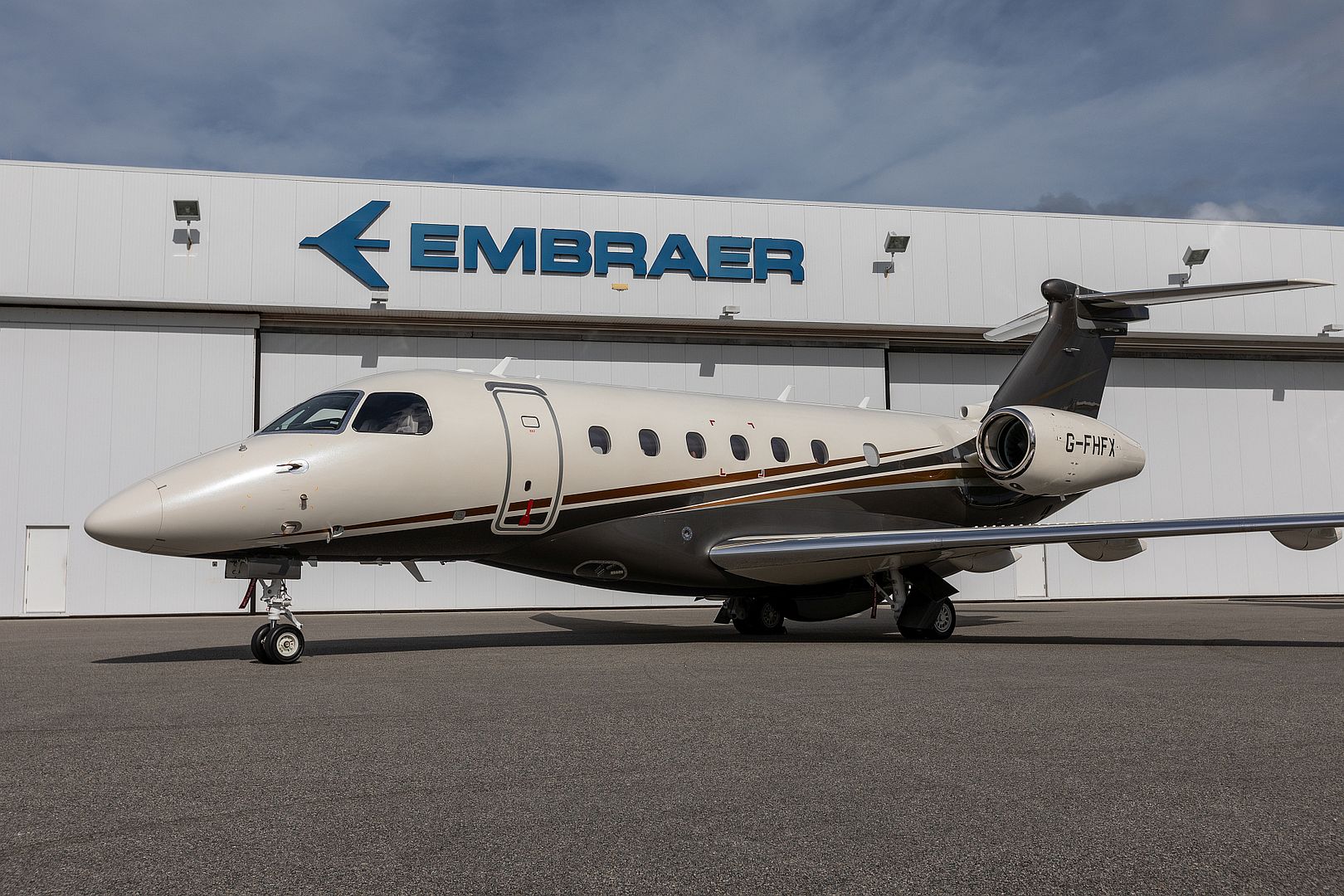
Embraer and Flexjet enjoy a long-standing, successful partnership. In 2003, Flight Options ? which merged with Flexjet in 2015 ? became the first fractional ownership program to introduce the Legacy Executive Jet. In 2010, they introduced the Phenom 300, and in 2012 the company took delivery of Embraer?s milestone 100th Phenom 300. Then in 2015, Flexjet became the first fractional provider to offer the Legacy 500, later taking delivery of Embraer?s milestone 1000th business jet ? a Legacy 500 ? in 2016. The Legacy 450 then joined the Flexjet fleet in 2016.
With Embraer?s commitment to continually improving each of the four aircraft in its industry-leading business jet portfolio, recent updates to the Praetors include enhancements for cabin safety ? a standard HEPA air filter, the MicroShield 360? cleaning solution, and electric lavatory pocket door ? plus the certification of a synthetic vision guidance system (SVGS).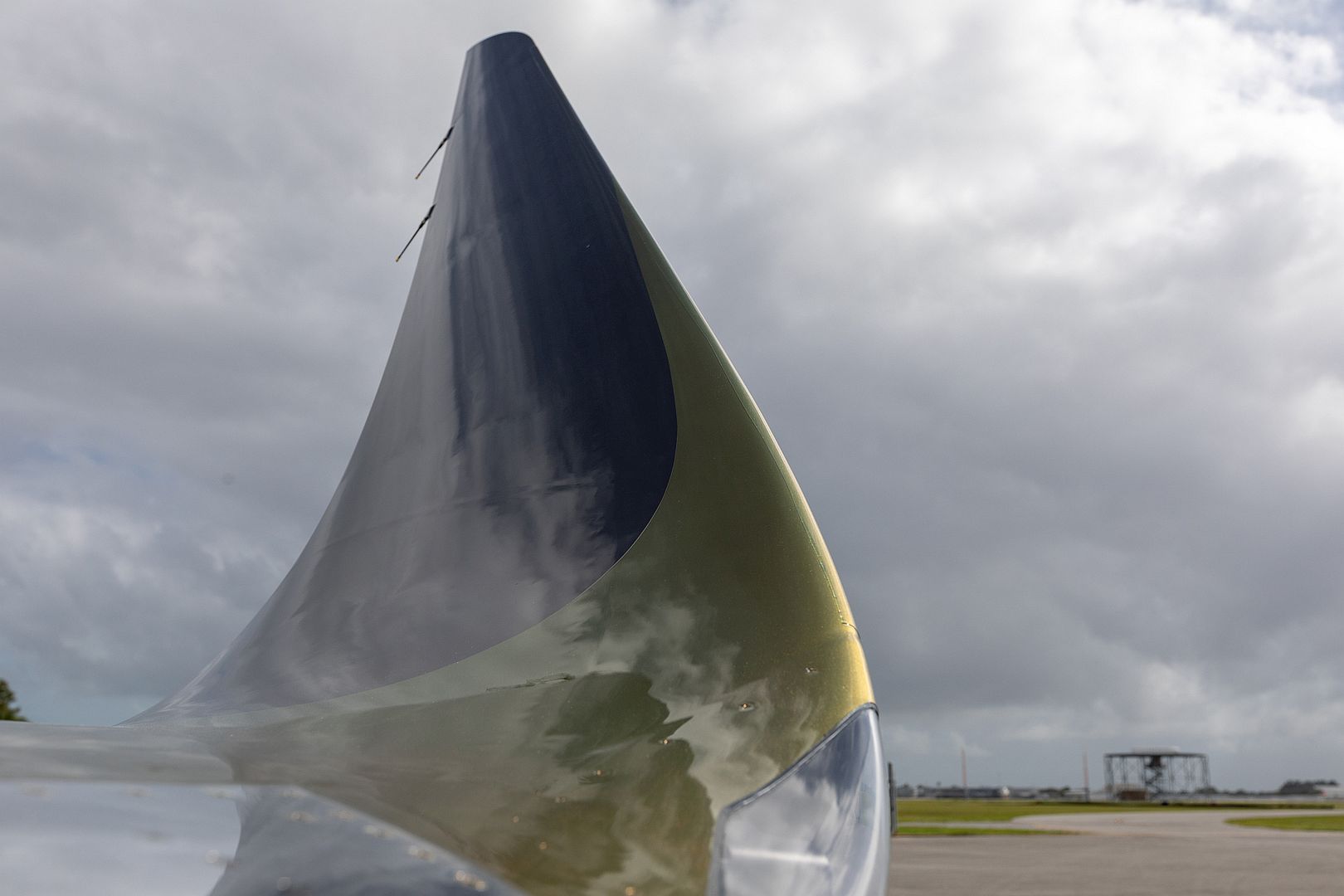
November 28.2020.
RAF Typhoon fast jets were scrambled this morning to intercept Russian military aircraft operating in international airspace near UK airspace.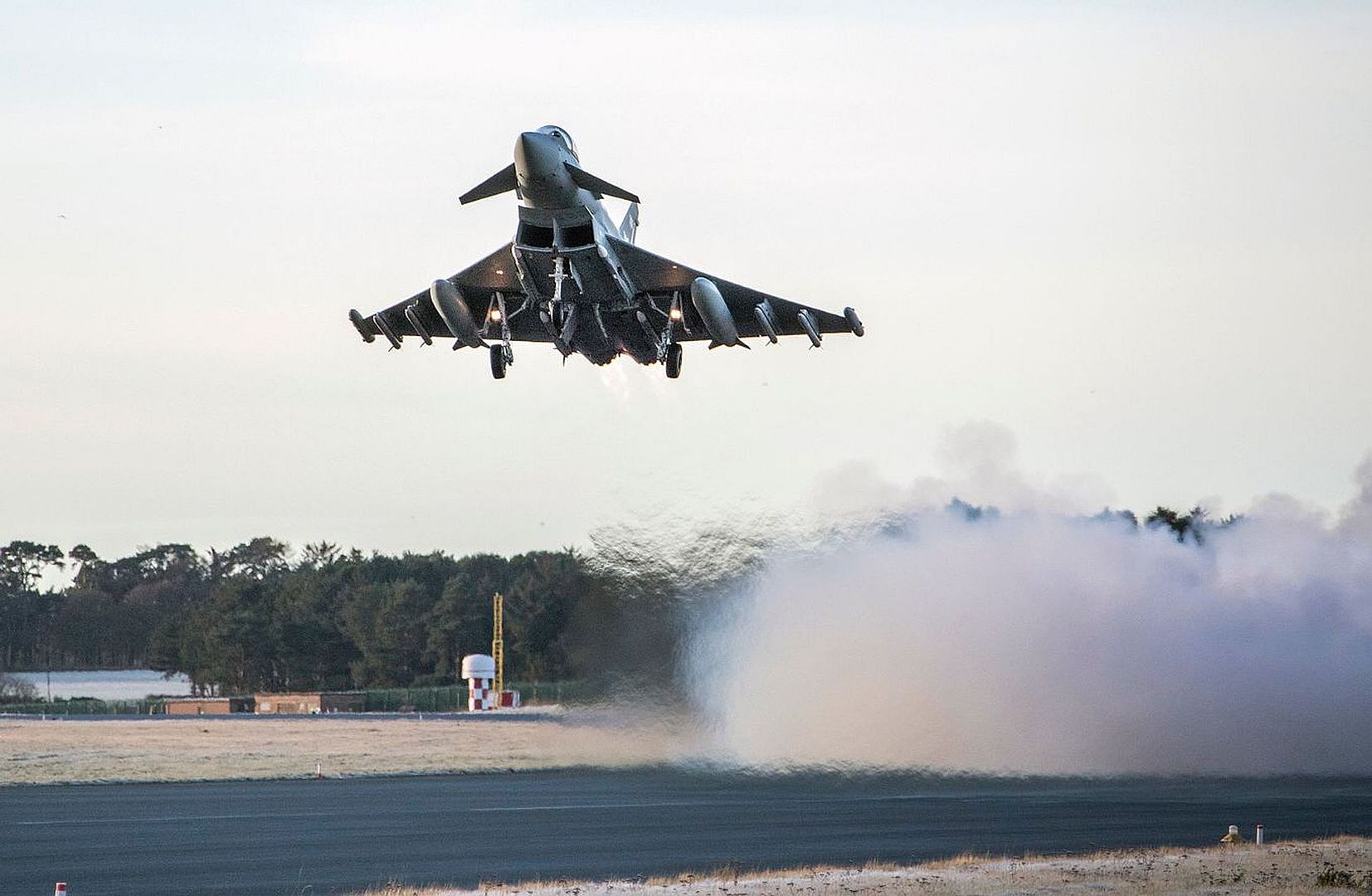
The Typhoons launched from RAF Lossiemouth on Saturday morning and were joined by an RAF Voyager from RAF Brize Norton, which provided air-to-air refuelling for the Typhoons.
Two Russian Tu-142 Bear F aircraft were intercepted. These aircraft are used in the roles of Anti-Submarine Warfare and Maritime Patrol. It is essential that their movements are carefully monitored when operating close to UK airspace.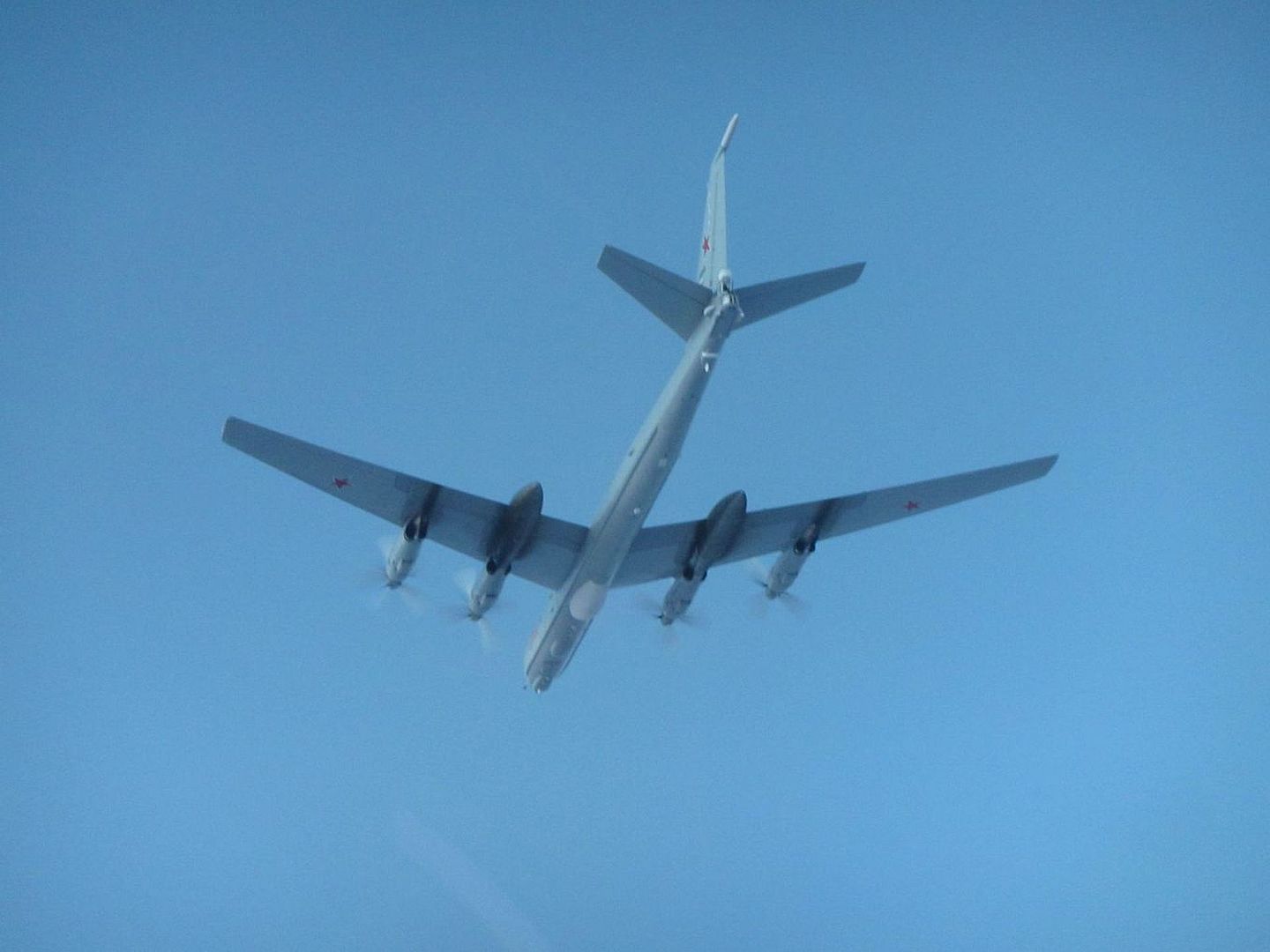
Russian military aircraft operating within the UK Flight Information Region can act as a hazard to other air users, especially in this case as this was busy airspace over the North Sea. Often these aircraft do not squawk, which involves transmitting a code to identify the aircraft?s intentions, position, and altitude, or talk to UK air traffic controllers, causing other civilian airliners in the area to be re-routed to prevent aircraft from flying too close.
(Photos courtesy of the MOD)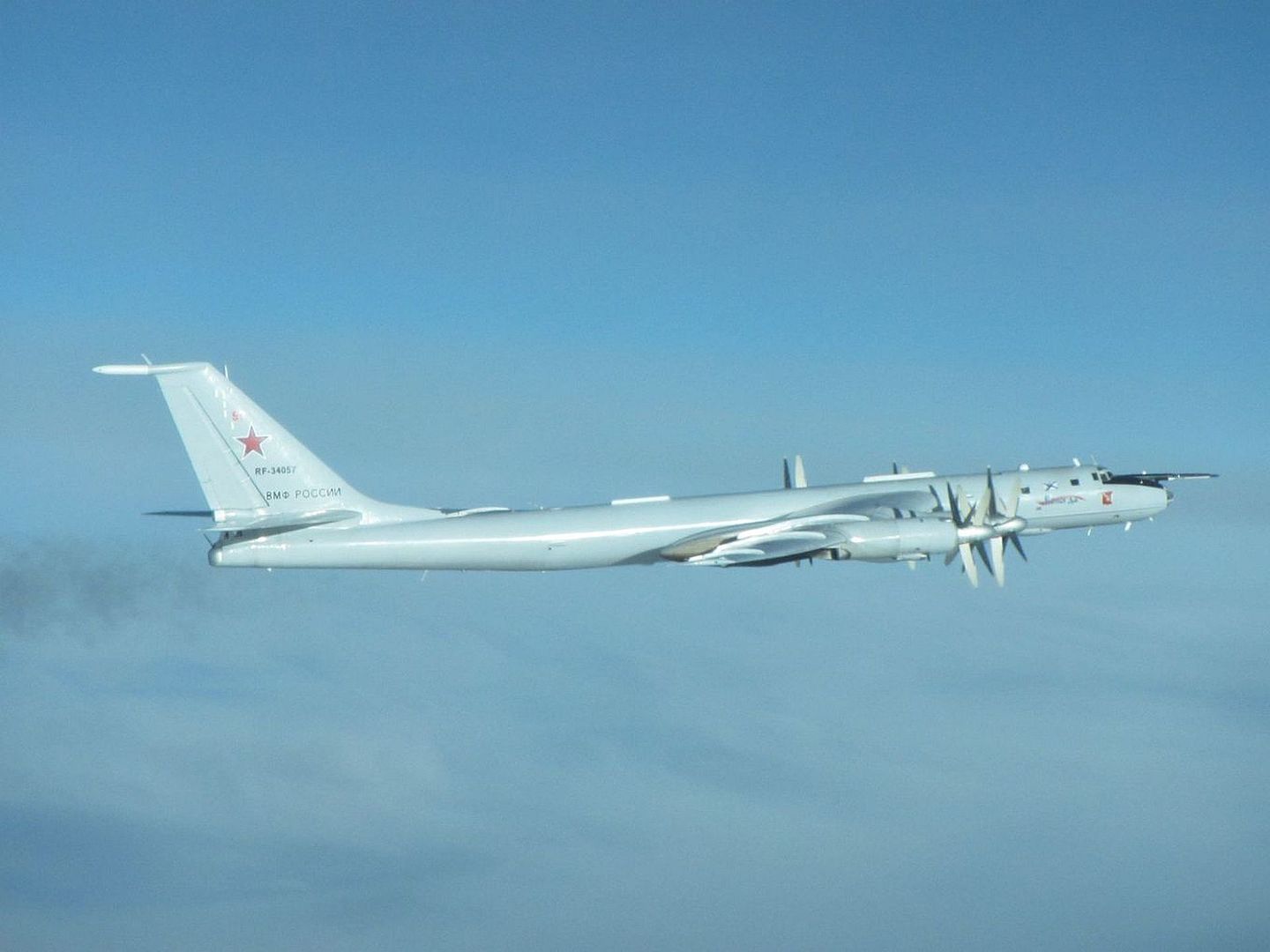
-
 Main AdminARABIAN SEA (Nov. 28, 2020) An E-2C Hawkeye, from the "Sun Kings" of Carrier Airborne Early Warning Squadron (VAW) 116, assigned to the aircraft carrier USS Nimitz (CVN 68), patrols the skies above the Arabian Sea. Nimitz, the flagship of Nimitz Carrier Strike Group, is deployed to the U.S. 5th Fleet area of operations to ensure maritime stability and security in the Central Region, connecting the Mediterranean and Pacific through the Western Indian Ocean and three critical chokepoints to the free flow of global commerce. (U.S. Navy photos by Mass Communication Specialist 3rd Class Keenan Daniels and Mass Communication Specialist 3rd Class Elliot Schaudt/Released)
Main AdminARABIAN SEA (Nov. 28, 2020) An E-2C Hawkeye, from the "Sun Kings" of Carrier Airborne Early Warning Squadron (VAW) 116, assigned to the aircraft carrier USS Nimitz (CVN 68), patrols the skies above the Arabian Sea. Nimitz, the flagship of Nimitz Carrier Strike Group, is deployed to the U.S. 5th Fleet area of operations to ensure maritime stability and security in the Central Region, connecting the Mediterranean and Pacific through the Western Indian Ocean and three critical chokepoints to the free flow of global commerce. (U.S. Navy photos by Mass Communication Specialist 3rd Class Keenan Daniels and Mass Communication Specialist 3rd Class Elliot Schaudt/Released)

An F-15E Strike Eagle takes off during the mid afternoon for a mission hours after the crew enjoyed a Thanksgiving dinner. The Red Tails operate around the clock 365 days a year providing safety to our troops and allies along with keeping the enemy on the run. (U.S. Air National Guard photo by Master Sgt. Jonathan Young)
ST. LOUIS, Dec. 1, 2020 ? The U.S. Air Force is one step closer to receiving its next-generation trainer as Boeing [NYSE: BA] started producing the T-7A Red Hawk?s ?real-as-it-gets? ground-based training system (GBTS).
Boeing teams are currently assembling the first two weapons systems trainers and an operational flight trainer at the company?s St. Louis site. These simulators, which are the foundation for pilot training and key to the Air Force?s readiness, can digitally connect to actual T-7A aircraft and enable live virtual constructive and embedded training scenarios.
?The Red Hawk?s training system is arguably the most advanced in the world. It?s a game changer,? said Chuck Dabundo, vice president of Boeing T-7 Programs. ?This system is 100% integrated with the pilot?s real-world experience, offering ?real-as-it-gets? simulation. We?re working closely with the U.S. Air Force and look forward to testing and fielding the devices.?
The training simulators are equipped with high-fidelity crew stations that include dynamic motion seats and the Boeing Constant Resolution Visual System?s 8K native projectors, offering 16 times the clarity of traditional high-definition video (1080p).
?This is the most accurate, immersive experience that any pilot can have outside the aircraft,? said Sherri Koehnemann, T-7A Training & Sustainment director at Boeing Global Services. ?We?ve integrated the training across the board, including ?one push? software updates. What a pilot sees in the classroom, on his or her desktop training devices, and in the operational and weapon systems trainers will be what they see in the jet. Future pilots can expect more holistic, immersive training.?
The T-7A?s GBTS was built on an open systems architecture of hardware and digital software that will allow it to grow with the Air Force?s evolving needs.
Boeing expects to deliver the first T-7A Red Hawk simulators to the Air Force in 2023.
Boeing is the world?s largest aerospace company and leading provider of commercial airplanes, defense, space and security systems, and global services. As the top U.S. exporter, the company supports commercial and government customers in more than 150 countries and leverages the talents of a global supplier base. Building on a legacy of aerospace leadership, Boeing continues to lead in technology and innovation, deliver for its customers and invest in its people and future growth.
Rome 30 November 2020.
Leonardo announced today that the Pol?cia Rodovi?ria Federal (PRF) of Brazil will introduce into service six AW119Kx single engine helicopters. The first aircraft is expected to be introduced in Brazil beginning next year, with the delivery of the remainder helicopters to the operator planned to be completed by mid-2021. The AW119Kxs will be operated by the Air Operations Division (DOA) from its bases in the five Regions of Brazil to perform a range of missions including transport, rescue, emergency medical service, firefighting, surveillance and law enforcement.
The selection of the AW119Kx by the PRF was made following a rigorous assessment of technical capabilities to best meet the law enforcement agency?s needs. The handover of these helicopters will further expand the fleet of Leonardo helicopters used by law enforcement, rescue and public service operators across Brazil which already includes the AW119 single engine type in addition to the AW109 light twin and AW139 intermediate twin models. The helicopters will feature an advanced customized configuration including, among others, a Garmin G1000NXi glass cockpit, an infrared capable electro-optics system, rescue hoist, cargo hook, bambi bucket to counter fires, rappelling kit on both sides for special forces operations, advanced communication systems.
To date there are over 190 Leonardo helicopters of various types operating in Brazil performing many roles including: corporate/private transport, law enforcement, public services, offshore transport, and naval applications. As the success of Leonardo?s product grows further, the Company is committed to further strengthening its existing level of localized services with the establishment of a new regional support centre, run by Leonardo do Brasil, in Itapevi, 30 km from S?o Paulo whose groundbreaking was celebrated in February. The new support centre will expand the services already provided by the existing facility headquartered in S?o Paulo.
Leonardo is committed to serving and protecting communities around the world, contributing to their sustainable growth by leading in next generation technologies. Partnering with Governments, private organizations and industries for the best security and safety capabilities is a cornerstone of Leonardo?s Be Tomorrow 2030 Strategic Plan.

-
 Main AdminAirmen assigned to 911th Aircraft Maintenance Squadron enter a C-17 Globemaster III to conduct routine maintenance at the Pittsburgh International Airport Air Reserve Station, Pennsylvania, Dec. 2, 2020. Airmen conduct aircraft maintenance during all weather conditions ensuring mission and operational readiness. (U.S. Air Force photo by Joshua J. Seybert)
Main AdminAirmen assigned to 911th Aircraft Maintenance Squadron enter a C-17 Globemaster III to conduct routine maintenance at the Pittsburgh International Airport Air Reserve Station, Pennsylvania, Dec. 2, 2020. Airmen conduct aircraft maintenance during all weather conditions ensuring mission and operational readiness. (U.S. Air Force photo by Joshua J. Seybert)
MCAS MIRAMAR, Calif. --- In a time characterized by rapidly evolving tactics and modernized equipment, the Marine Corps has taken the next step in maintaining air superiority as Marine Fighter Attack Squadron (VMFA) 314 declares their initial operational capability (IOC) for the F-35C Lightning II.
Initial operational capability declaration marks a significant accomplishment for 3rd Marine Aircraft Wing (MAW), enabling VMFA-314 to deploy the F-35C onto aircraft carriers where they will be able to support combat operations anywhere in the world.
?The F-35 is an expeditionary platform that extends the reach of our Marines and machines, and increases our ability to support joint and allied partners at a moment?s notice,? said Maj. Gen. Christopher Mahoney, 3rd MAW commanding general. ?By effectively employing the F-35, MAGTF [Marine Air-Ground Task Force] commanders have the potential to dominate our adversaries in a joint battlespace, in the air and out at sea.?
Having the most advanced stealth fighter jets the world has ever seen is only the beginning. A strategic and tactical understanding of how to operate and properly maintain the F-35 and its advanced capabilities is essential to its employment in an increasingly non-permissive maritime domain.
To receive this qualification, squadrons must meet the Headquarters Marine Corps standards, which define the minimum number of trained Marines, mission ready aircraft and trained pilots needed in order for a squadron to become IOC complete.
?Our maintenance department was critical to the success of IOC. In addition to accepting and inspecting the multiple aircraft that arrived throughout the year, the Marines maintained a high level of aircraft readiness,? said Lt. Col. Duncan French, VMFA-314 executive officer. ?Those mission capable aircraft allowed the pilots to train in the appropriate missions required of IOC, as well as contributed towards the readiness metrics of IOC.?
The F-35?s ability to combine advanced stealth capabilities, integrated avionics and the most powerful sensor package the Department of Defense has ever seen allows it to operate in contested areas, and gives the Marine Corps an unparalleled ability to maintain air superiority in dynamic, unpredictable and competitive environments.
French continued, ?VMFA-314?s declaration of IOC is a significant milestone not only for 3rd MAW but also the Marine Corps. VMFA-314 is the first F-35C squadron in the Marine Corps. The F-35C?s unique capabilities, compared to the F-35B and legacy aircraft, provide the Marine Corps with a complementary increase in combat projection and the ability to operate from the U.S. Navy?s aircraft carriers.?
As tactics and equipment used in the current battlespace continuously change, 3rd MAW commander?s willingness to develop their understanding of emerging technologies and to utilize them empowers the Marine Air Combat Element with the flexibility to solve dynamic problems that Marines will face in the future.
?This achievement ultimately would not have been possible without the hard work and dedication of the Marines, Sailors, and civilian contractors assigned to VMFA-314,? said Lt. Col. Brendan Walsh, VMFA-314 commanding officer. ?The successful transition of the Black Knights to the F-35C culminating in this IOC declaration is a testament to the squadron?s distinguished legacy of pioneering new aircraft.?
The capability to employ the F-35 alongside 3rd MAW?s other capabilities further enables support of fleet Marines and joint and allied partners preserves 3rd MAW?s ability to dominate the battlespace for the MAGTF and joint commanders.
3rd MAW continues to "Fix, Fly, and Fight" as the Marine Corps' largest aircraft wing and remains combat-ready, deployable on short notice, and lethal when called into action.
ORLANDO, Fla., Dec. 2, 2020 ? U.S. Marines are now preparing to fly, maintain and sustain the CH-53K heavy lift helicopter, which will enable them to safely complete longer-range missions in harsher environments compared to the current fleet of aircraft. The suite of training devices from Lockheed Martin (NYSE: LMT) were recently declared Ready for Training at Marine Corps Air Station (MCAS) New River in Jacksonville, North Carolina.
?These training devices will prepare aircrew and maintainers for the full suite of capabilities of the CH-53K in a safe and cost-effective manner,? said Tom Gordon, Lockheed Martin, vice president of Training and Simulation Solutions. ?Crews can rehearse for operational deployment, ensuring the U.S. Marines are ready to successfully complete their missions.?
The Containerized Flight Training Device (CFTD) is a portable full-mission flight simulator that will allow flight crews to train on the full scope of Marine Corps heavy lift missions, including external lift operations.
The CFTD replicates the functionality, flight characteristics, mission profiles and unmatched capabilities of the CH-53K helicopter. The device can replicate the various environmental conditions that the aircraft is likely to fly in as well as a multitude of mission profiles in the operation of a true heavy lift helicopter.
The Helicopter Emulation Maintenance Trainer (HEMT) and Composite Maintenance Trainer (CMT) are both purpose-built for the King Stallion?s maintenance training.
The HEMT is a computer-based lab that familiarizes the mechanic with maintenance tasks they perform, including tools, functions and checks. By virtually depicting the inside and outside of the aircraft and providing feedback, maintainers can learn many of the maintenance functions utilizing the HEMT prior to working on the aircraft.
The CMT is a full-scale mock-up of the aircraft and is the final step of familiarizing the maintainer with the aircraft. The device allows students to interact with the physical controls of the aircraft to learn to remove and install hardware and perform functional checks. An instructor operating system assigns tasks and monitors progress for focused feedback.
?The training devices will ensure a flawless entry into service for the CH-53K heavy lift helicopter,? said Bill Falk, Sikorsky CH-53K program director. ?We are proud to build this 21st century helicopter giving mission flexibility to the U.S. Marine Corps.?
AUSTRALIA, Dec 2, 2020 ? Boeing [NYSE:BA] recently completed flight tests with five high-performance surrogate jets operating autonomously in a team at the new Queensland Flight Test Range in Cloncurry, Australia.
Boeing?s advanced autonomy technology, including on-board command and control and data sharing capabilities, were tested using the 3.4-meter (11-foot) aircraft.
?The tests demonstrated our success in applying artificial intelligence algorithms to ?teach? the aircraft?s brain to understand what is required of it,? said Emily Hughes, director of Phantom Works International. ?The data link capabilities enabled the aircraft to communicate with the other platforms so that they could collaborate to achieve a mission.?
Testing lasted 10 days, with aircraft incrementally added until the five operated together. During testing, the aircraft reached speeds of 270 kilometers (167 miles) per hour.
?With the size, number and speed of aircraft used in the test, this is a very significant step for Boeing and industry in the progress of autonomous mission systems technology,? Hughes said.
The activity was the final milestone delivered in partnership with the Queensland government as part of Boeing?s Advanced Queensland Autonomous Systems Platform Technology Project. During the project, Boeing has worked with over 90 personnel from a number of small-to-medium enterprises including RFDesigns, Amber Technology Ltd., Premier Box, McDermott Aviation and Five Rings Aerospace.
Technology and capabilities proven under this program will form part of the Boeing Airpower Teaming System and future Boeing autonomous platforms.
Getafe, 02 December 2020 ? The Ministry of Defence of the Republic of Mali has placed a firm order for an additional Airbus C295 airlifter in the transport configuration. This second aircraft, to be delivered in 2021, will supplement the first C295 already in operation since December 2016 which has already accumulated 1,770 flight hours and transported more than 38,000 passengers and 900 tonnes of cargo in less than four years of operations.
This new order also includes an integrated logistics support package with spare parts for the two aircraft and training for flight crews and mechanics.
This acquisition is in response to the urgent need of the authorities of the Republic of Mali to have permanent air transport capacity within a very short timeframe, providing a vital link supporting operations and actions for the development of isolated areas in the northern regions of the country. Bernhard Brenner, Head of Marketing and Sales at Airbus Defence and Space, said: ?This repeat order demonstrates the excellent capabilities and performance of our aircraft. The C295 is becoming the 21st century standard tactical airlifter in Africa with 37 aircraft ordered in the region, from Algeria, Egypt and Ghana to Ivory Coast, Burkina Faso and Mali.?
WICHITA, Kan. (Dec. 2, 2020) ? Textron Aviation is launching an exciting new era for its renowned Beechcraft King Air 200 series aircraft with the introduction of the Beechcraft King Air 260 turboprop. Featuring the latest technological advancements to the cockpit and improvements in the cabin, the King Air 260 reflects the company?s continued commitment to making substantial investments to its current industry-leading products. Assembly production for the King Air 260 is already underway, and certification and deliveries are expected in early 2021.
The Beechcraft King Air 260 turboprop is designed and manufactured by Textron Aviation Inc., a Textron Inc. (NYSE:TXT) company.
The announcement comes on the heels of the recently introduced Beechcraft King Air 360, which features the latest enhancements to the cockpit and cabin. The King Air 360 achieved FAA type certification in October, and customer deliveries are underway.
The King Air 260 combines the platform?s rich history of rugged reliability and versatility with state-of-the-art upgrades and next-generation capability, offering a greater ease of flying. Key enhancements to the aircraft are the addition of the Innovative Solutions & Support (IS&S) ThrustSense? Autothrottle, along with a new digital pressurization controller. The cockpit also offers the Collins Aerospace Multi-Scan weather radar system as a standard feature on every King Air 260.
?These investments reflect our commitment to providing superior upgrades and engineering innovation that create the best flying experience for Beechcraft King Air 260 owners and operators around the world,? said Ron Draper, president and CEO. ?We place an immense value on our conversations with our customers, and the investments we make in our aircraft are a direct result of listening to their input. I?m proud of the impressive effort by our team for taking a legendary aircraft and adding technological advancements that will allow customers to achieve their varied missions.?
About the King Air 260
With an occupancy of up to nine, a maximum range of 1,720 nautical miles and a top cruise speed of 310 ktas, the Beechcraft King Air 200 series aircraft has long been the aircraft of choice for customers around the world. The latest upgrades offer even more reasons for choosing the aircraft.
The ThrustSense? Autothrottle supports pilots in their critical mission of delivering people or cargo by automatically managing engine power from the takeoff roll through the climb, cruise, descent, go-around and landing phases of flight. This enhancement reduces pilot workload and is designed to prevent over-speed or under-speed, over-temp and over-torque conditions.
Another key update in the cockpit is the new digital pressurization controller, which automatically schedules cabin pressurization during both climb and descent, reducing pilot workload and increasing overall passenger comfort. The pressurization gauges have been integrated with the powerful Collins Aerospace Pro Line Fusion flight deck.
The Collins Multi-Scan RTA-4112 weather radar provides pilots with a fully automatic system that it optimized to detect short, mid and long-range weather. The system is designed to present an accurate picture of the weather around the aircraft, further reducing pilot workload.
?The Beechcraft King Air lineup is the most popular business turboprop in the world,? said Rob Scholl, senior vice president, Sales and Flight Operations for Textron Aviation. ?It?s essential for us to continue exploring ways to bring innovation to such a renowned aircraft, and these enhancements will allow owners and operators to accomplish their various missions with greater comfort, technology and ease.?
The IS&S ThrustSense? Autothrottle is also available as an aftermarket upgrade through Textron Aviation Service facilities on all Pro Line Fusion-equipped Beechcraft King Air 200 series aircraft.
The cabin, meanwhile, features newly designed seats created through an innovative pressure-mapping process that identifies ways to provide a more comfortable, relaxing journey for passengers, especially on longer flights.
King Air leadership
Nearly 7,600 Beechcraft King Air turboprops have been delivered to customers around the world since 1964, making it the best-selling business turboprop family in the world. The worldwide fleet has surpassed 62 million flight hours in its 56 years, serving roles in all branches of the U.S. military and flying both commercial and special mission roles around the world.
30 November
Three brand new F-35B Lightning aircraft departed the Lockheed Martin facility in Fort Worth, Texas last week during a stunning sunrise.
We expect them to arrive with us soon, and will update you once they are here.
These are the first aircraft we have had delivered directly to us at RAF Marham and bring the total number within the Lightning Force to 21.
Imagery courtesy of Lockheed Martin.
Typhoons from 12 Squadron based at Royal Air Force Coningsby
have arrived in Qatar for Exercise Epic Skies.
Pilots from the Royal Air Force and Qatar Emiri Air Force will fly Typhoons together for the first time as a joint squadron in Qatar, strengthening the close ties between both nations. The two-week exercise will challenge 12 Squadron?s pilots in a range of air to air, and air to surface scenarios which will put their training to the test.
The Government of Qatar has ordered 24 Typhoons and world-class training at a number of RAF establishments as part of a ?6 billion deal which will secure jobs in the UK for years to come.
RAF and French A400M aircraft have been operating from Keevil Airfield as part of Exercise WessexStorm.
Landing into the austere airfield, the A400M from RAF Brize Norton and Escadron de Transport 1/61 Touraine
delivered personnel of the 16 Air Assault Brigade - 2 PARA Battlegroup throughout the day, supported by personnel from the RAFs Tactical Air Traffic Control to ensure a safe operating environment.
-
 Main AdminU.S. Marines with Marine Medium Tiltrotor Squadron 268 operate an MV-22 Osprey during a maximum aircraft launch exercise over the island of Oahu, Hawaii, Dec. 2, 2020. VMM-268 conducted the training in order to showcase their ability to fly with a large amount of aircraft and increase combat readiness. (U.S. Marine Corps photo by Cpl. Jacob Wilson)
Main AdminU.S. Marines with Marine Medium Tiltrotor Squadron 268 operate an MV-22 Osprey during a maximum aircraft launch exercise over the island of Oahu, Hawaii, Dec. 2, 2020. VMM-268 conducted the training in order to showcase their ability to fly with a large amount of aircraft and increase combat readiness. (U.S. Marine Corps photo by Cpl. Jacob Wilson)
NORTH ARABIAN SEA (Dec. 2, 2020) An F/A-18F Super Hornet, from the ?Mighty Shrikes? of Strike Fighter Squadron (VFA) 94, taxis across the flight deck of the aircraft carrier USS Nimitz (CVN 68). Nimitz, the flagship of Nimitz Carrier Strike Group, is deployed to the U.S. 5th Fleet area of operations to ensure maritime stability and security in the Central Region, connecting the Mediterranean and Pacific through the Western Indian Ocean and three critical chokepoints to the free flow of global commerce. (U.S. Navy Photo by Mass Communications Specialist Seaman Joseph Calabrese/Released)
NAVAL AIR STATION SIGONELLA, Italy (Dec. 1, 2020) Sailors assigned to the Grey Knights of Patrol Squadron (VP) 46 walk down the flight line during a FOD walk down. VP-46 is currently forward deployed to the U.S. Sixth Fleet area of operations and is assigned to Commander, Task Force 67, responsible for tactical control of deployed maritime patrol and reconnaissance squadrons throughout Europe and Africa. (U.S. Navy photo by Mass Communication Specialist 3rd Class Zach Dalton/ Released)
Soldiers assigned to the 4th Battalion, 3rd Aviation Regiment, 3rd Combat Aviation Brigade, 3rd Infantry Division, conduct preflight checks at Hunter Army Airfield, Georgia, Dec. 2. The Soldiers completed night time mountain training in Northern Georgia. This training allowed pilots and flight crews the ability to fly in a diverse terrain increasing the unit?s adaptability and readiness. (U.S. Army photo by Sgt. Andrew McNeil/ 3rd Combat Aviation Brigade, 3rd Infantry Division)
A Belgian Air Force F-16 Fighting Falcons fly in the U.S. Central Command area of responsibility, Nov. 23, 2020. The F-16 is a compact, multi-role fighter aircraft that delivers war-winning airpower to the U.S. Central Command area of responsibility. (U.S. Air Force photo by Staff Sgt. Sean Carnes)
A U.S. Air Force F-16 Fighting Falcon fly in the U.S. Central Command area of responsibility Nov. 30, 2020. The F-16 Fighting Falcon is a compact, multirole fighter aircraft that delivers war-winning airpower to the USCENTCOM area of responsibility. (U.S. Air Force photo by Staff Sgt. Sean Carnes)
WASHINGTON, Dec. 3, 2020 /PRNewswire/ -- Boeing [NYSE: BA] and Ryanair announced today that Europe's largest airline is placing a firm order for 75 additional 737 MAX airplanes, increasing its order book to 210 jets. Ryanair again selected the 737 8-200, a higher-capacity version of the 737-8, citing the airplane's additional seats and improved fuel efficiency and environmental performance.
"Ryanair's board and people are confident that our customers will love these new aircraft. Passengers will enjoy the new interiors, more generous leg room, lower fuel consumption and quieter noise performance. And, most of all, our customers will love the lower fares, which these aircraft will enable Ryanair to offer starting in 2021 and for the next decade, as Ryanair leads the recovery of Europe's aviation and tourism industries," said Ryanair Group CEO Michael O'Leary.
O'Leary and Ryanair leaders joined the Boeing team for a signing ceremony in Washington, D.C. Both companies acknowledged COVID-19's impacts on air traffic in the near-term, but expressed confidence in the resilience and strength of the passenger demand over the long term.
"As soon as the COVID-19 virus recedes ? and it likely will in 2021 with the rollout of multiple effective vaccines ? Ryanair and our partner airports across Europe will ? with these environmentally efficient aircraft ? rapidly restore flights and schedules, recover lost traffic and help the nations of Europe recover their tourism industries, and get young people back to work across the cities, beaches and ski resorts of the European Union," O'Leary said.
Ryanair is the launch customer for the high-capacity 737-8 variant, having placed its first order for 100 airplanes and 100 options in late 2014, followed by firm orders of 10 airplanes in 2017 and 25 in 2018. The 737 8-200 will enable Ryanair to configure its aircraft with 197 seats, increasing revenue potential, and reduce fuel consumption by 16 percent compared to the airline's previous airplanes.
"Ryanair will continue to play a leading role in our industry when Europe recovers from the COVID-19 pandemic and air traffic returns to growth across the continent. We are gratified that Ryanair is once again placing its confidence in the Boeing 737 family and building their future fleet with this enlarged firm order," said Dave Calhoun, president and CEO of The Boeing Company.
"Boeing remains focused on safely returning the full 737 fleet to service and on delivering the backlog of airplanes to Ryanair and our other customers. We firmly believe in this airplane, and we will continue the work to re-earn the trust of all of our customers," Calhoun said.
Leonardo has announced today the recent delivery of the first HH-139B twin engine helicopter to the Italian Air Force, a customised variant of the bestselling AW139 platform, from its facility based in Vergiate. The aircraft is the first of 17 HH-139Bs and deliveries are expected to be completed by 2021, in order to further strengthen the multirole capabilities of the Italian Air Force as an essential enabler to support emergency response and security requirements across the nation. The helicopter will be operated by the Italian Air Force?s 15th Wing which is in charge for search and rescue (SAR) duties and supports the national community in case of disaster relief operations.
The HH-139Bs will perform a range of missions including SAR, fire-fighting, Slow Mover Intercept, and join an existing fleet of 13 multirole HH-139As and four VH-139As, the latter are used for Government transport missions. Compared to the HH-139A, the 7-tonne HH-139B variant features, among others, new electro-optics, new radar, a new rescue hoist and a mission console in the cabin. Core avionics will feature Phase 8 software release allowing even more advanced and safer all-weather navigation and mission capabilities.
In order to ensure the greatest level of responsiveness and effectiveness, an extended coverage area will be ensured by distributing the helicopters in several bases. Each aircraft can be quickly reconfigured from SAR to MEDEVAC or fire-fighting. The growth of the Italian Air Force?s HH-139 fleet also benefits from unique logistical, operational and technical, certification and training commonalities and synergies across the growing AW139 fleets of Government and public service operators in Italy. This reinforces the possibility to perform effective and safe joint operations with other users of this modern type and represents a quantum leap in homeland security, disaster relief capability and overall through-life-cycle cost/effectiveness for the future. During the Covid-19 pandemic, AW139s have been extensively used in Italy to deliver unique biocontainment installation transport services in its class.
In Italy, the AW139 has also been selected by Italy?s Guardia di Finanza, State Police, Coast Guard, National Fire Corps and Carabinieri, in addition to several emergency medical service operators. This latest Italian Air Force?s programme brings the total number of AW139s chosen by all of these Italian Government operators to nearly 80, covering a wide scope of public utility roles including law enforcement and homeland security, patrol, special operations and anti-terrorism, SAR, fire-fighting, command and control, government/VVIP transport, disaster relief and training.
Many military or law enforcement operators from countries around the world have selected or are already operating the AW139 to fulfil their requirements. With orders placed by over 280 customers from more than 70 nations, the AW139 is the most successful helicopter programme in the last 15 years with almost 1,100 units in-service logging over 2.9 million flight hours for the widest range of missions. The US Air Force (USAF) will soon introduce the AW139-based Boeing MH-139 to replace the UH-1N fleet.
Leonardo is committed to serving and protecting communities around the world, contributing to their sustainable growth by leading in next generation technologies. Partnering with Governments, private organisations, and industries for the best security and safety capabilities and this is a cornerstone of Leonardo?s Be Tomorrow 2030 Strategic Plan.
-
 Main AdminMISAWA, Japan (Dec. 4, 2020) ? An EA-18G Growler, assigned to the "Black Ravens" of Electronic Attack Squadron (VAQ) 135, lands at Misawa Air Base. VAQ-135 provides fully operational EA-18G aircraft to perform unrestricted Electronic Attack as needed throughout the world. (U.S. Navy photo by Mass Communication Specialist 2nd Class Jan David De Luna Mercado)
Main AdminMISAWA, Japan (Dec. 4, 2020) ? An EA-18G Growler, assigned to the "Black Ravens" of Electronic Attack Squadron (VAQ) 135, lands at Misawa Air Base. VAQ-135 provides fully operational EA-18G aircraft to perform unrestricted Electronic Attack as needed throughout the world. (U.S. Navy photo by Mass Communication Specialist 2nd Class Jan David De Luna Mercado)
NORTH ARABIAN SEA (Dec. 3, 2020) An F/A-18E Super Hornet, from the ?Kestrels? of Strike Fighter Squadron (VFA) 137, taxis across the flight deck of the aircraft carrier USS Nimitz (CVN 68). Nimitz, the flagship of Nimitz Carrier Strike Group, is deployed to the U.S. 5th Fleet area of operations to ensure maritime stability and security in the Central Region, connecting the Mediterranean and Pacific through the Western Indian Ocean and three critical chokepoints to the free flow of global commerce. (U.S. Navy Photo by Mass Communications Specialist Joseph Calabrese)
NORTH ARABIAN SEA (Dec. 3, 2020) An F/A-18E Super Hornet, from the ?Kestrels? of Strike Fighter Squadron (VFA) 137, approaches the flight deck of the aircraft carrier USS Nimitz (CVN 68). Nimitz, the flagship of Nimitz Carrier Strike Group, is deployed to the U.S. 5th Fleet area of operations to ensure maritime stability and security in the Central Region, connecting the Mediterranean and Pacific through the Western Indian Ocean and three critical chokepoints to the free flow of global commerce. (U.S. Navy photo by Mass Communication Specialist Seaman Joseph Calabrese)
A U.S. Air Force F-16 Fighting Falcon assigned to the 480th Expeditionary Fighter Squadron lands Al Dhafra Air Base, United Arab Emirates, Dec. 2, 2020. The F-16 is highly maneuverable in air-to-air combat and air-to-surface attack while providing a low-cost, high-performance weapon system for the U.S. and allied nations. (U.S. Air Force photo by Senior Airman Bryan Guthrie)
U.S Air Force F-16 Fighting Falcons assigned to the 480th Expeditionary Fighter Squadron taxi at Al Dhafra Air Base, United Arab Emirates, Nov. 19, 2020. A detachment of F-16 Fighting Falcons deployed from the 52nd Fighter Wing, Spangdahlem Air Base, Germany, to enhance U.S. Air Forces Central?s ability to deter aggression and promote security and stability within the U.S. Central Command area of responsibility. (U.S. Air Force photos by Senior Airman Bryan Guthrie)


Saint-Cloud, France, December 4th, 2020 ? The rollout is a special symbolic moment that represents a milestone in the life of an aeronautical program. It is a milestone eagerly awaited by our customers, partners and employees, united around the new aircraft that will soon be ready for takeoff.
We wanted to reinvent this tradition by adapting it to the context of Covid-19: the rollout of our new business aircraft, the Falcon 6X, will therefore be shown in a video broadcast from Bordeaux-M?rignac, this coming Tuesday, December 8th, starting at 6:30 pm, Paris time.
We are pleased to invite you to attend this first ?e-rollout? in the history of aviation. The event will be streamed live on the Internet on the www.Falcon6Xrollout.com website, as well as via the link https://www.youtube.com/user/MyFalconJet
In a show of rotary power, Royal Air Force helicopters under the command of Joint Helicopter Command lifted troops, vehicles and supplies on to the Salisbury Plain from Keevil Airfield.
Chinook and Puma helicopters from RAF Benson and RAF Odiham escorted by the sensors and weapons of Army Air Corps Wildcat reconnaissance helicopters and Apache attack helicopters delivered waves of assaulting troops onto Imber Village as part of Exercise #WessexStorm.
The 1,300-strong multinational force of 2 Para Battlegroup 16 Air Assault Brigade,captured the remote location to use as a base for further missions.
(Photos Courtesy of the MOD)
-
 Main AdminNORTH ARABIAN SEA (Dec. 6, 2020) A Super Puma (EC-225) helicopter, assigned to the Lewis and Clark-class dry cargo ship USNS Carl Brashear (T-AKE-7), transports cargo to the aircraft carrier USS Nimitz (CVN 68) during a replenishment-at-sea. Nimitz, the flagship of Nimitz Carrier Strike Group, is deployed to the U.S. 5th Fleet area of operations to ensure maritime stability and security in the Central Region, connecting the Mediterranean and Pacific through the Western Indian Ocean and three critical chokepoints to the free flow of global commerce. (U.S. Navy photos by Mass Communication Specialist Seaman Joseph Calabrese/Released)
Main AdminNORTH ARABIAN SEA (Dec. 6, 2020) A Super Puma (EC-225) helicopter, assigned to the Lewis and Clark-class dry cargo ship USNS Carl Brashear (T-AKE-7), transports cargo to the aircraft carrier USS Nimitz (CVN 68) during a replenishment-at-sea. Nimitz, the flagship of Nimitz Carrier Strike Group, is deployed to the U.S. 5th Fleet area of operations to ensure maritime stability and security in the Central Region, connecting the Mediterranean and Pacific through the Western Indian Ocean and three critical chokepoints to the free flow of global commerce. (U.S. Navy photos by Mass Communication Specialist Seaman Joseph Calabrese/Released)

A U.S. Air Force F-16 Fighting Falcon pilot, assigned to the 77th Expeditionary Fighter Squadron, flies alongside a KC-135R Stratotanker, assigned to the 340th Expeditionary Aircraft Refueling Squadron, on the way to conduct combat missions over Southwest Asia Dec. 4, 2020. The F-16 Fighting Falcon is a compact, multirole fighter aircraft that delivers airpower to the U.S. Central Command area of responsibility. (U.S. Air Force photo by Staff Sgt. Trevor T. McBride)
Two U.S. Air Force F-16 Fighting Falcon pilots, assigned to the 77th Expeditionary Fighter Squadron, flies alongside a KC-135R Stratotanker, assigned to the 340th Expeditionary Aircraft Refueling Squadron, on the way to conduct combat missions at night over Southwest Asia Dec. 4, 2020. The F-16 Fighting Falcon is a compact, multi-role fighter aircraft that delivers war-winning airpower to the U.S. Central Command area of responsibility. (U.S. Air Force photo by Staff Sgt. Trevor T. McBride)
A U.S. Air Force F-16 Fighting Falcon pilot, assigned to the 77th Expeditionary Fighter Squadron, flies alongside a KC-135R Stratotanker, assigned to the 340th Expeditionary Aircraft Refueling Squadron, over Southwest Asia Dec. 4, 2020. The F-16 Fighting Falcon is a compact, multi-role fighter aircraft that delivers airpower to the U.S. Central Command area of responsibility. (U.S. Air Force photo by Staff Sgt. Taylor Harrison)
JOINT BASE MCGUIRE-DIX-LAKEHURST, N.J. - A C-17 Globemaster III from Joint-Base McGuire-Dix-Lakehurst, New Jersey sits on the flightline during Exercise Razor Talon 21-1 at Marine Corps Air Station Cherry Point, North Carolina, Dec. 2, 2020. The C-17 delivered cargo to MCAS Cherry Point for Airmen to load weapons to the F-15E Strike Eagle. (U.S. Air Force photo by Senior Airman Jacob Derry)
JOINT BASE MCGUIRE-DIX-LAKEHURST, N.J. - A U.S. Air Force F-16 Fighting Falcon approaches a KC-10 Extender assigned to the 305th Air Mobility Wing from Joint Base McGuire-Dix-Lakehurst, N.J., for aerial refueling during an Agile Combat Employment (ACE) exercise, Dec 2, 2020. ACE is a developing concept of operations intended to ensure U.S. Air Forces are ready for potential contingencies by allowing forces to operate from locations with varying levels of capacity and support. (U.S. Air Force photo by 1st Lieutenant Victoria Wright)
ARABIAN SEA (Dec. 4, 2020) An E/A-18G Growler, from the "Cougars" of Electronic Attack Squadron (VAQ) 139, approaches the flight deck of the aircraft carrier USS Nimitz (CVN 68). Nimitz, the flagship of Nimitz Carrier Strike Group, is deployed to the U.S. 5th Fleet area of operations to ensure maritime stability and security in the Central Region, connecting the Mediterranean Sea and Pacific Ocean through the western Indian Ocean and three critical chokepoints to the free flow of global commerce. (U.S. Navy Photo by Mass Communications Specialist Joseph Calabrese)
07.12.2020.
The commanders of three aviation regiments of the Central Military District (CMD) practiced conducting air combat on two types of aircraft as part of command flights that ended at an airfield in the Chelyabinsk region.
During the program of command flights, the officers performed elements of air combat on Su-34 fighter-bombers and MiG-31BM interceptors. The crews worked out turns at maximum and afterburner engine operation, diving, as well as combat turns in pairs at altitudes from 300 to 10,000 meters. In addition, one of the components of the commander's flight program was to work out the interaction of the Su-34 and MiG-31BM crews with Su-24MR reconnaissance aircraft when performing tactical techniques to cover bomber aircraft during combat sorties in conditions of electronic counteraction. During the two tactical episodes, the pilots made more than 60 sorties.
The main task of command flights is to develop a unified methodology for training young pilots who will be put into service during the new training period. As part of the flight program, the crews worked out the interaction of mixed air units consisting of various types of aircraft, the use of sighting aircraft systems, as well as performing takeoffs, landings and simple aerobatics at altitudes from 50 meters to 10 kilometers.
About 20 units of aviation equipment were involved in the command flights: Su-34 fighter-bombers, MiG-31BM interceptors and Su-24MR reconnaissance aircraft; and more than 200 military personnel from the flight, engineering and technical personnel, as well as flight control and support groups.
(Photos courtesy of the Ministry of Defence of the Russian Federation)
-
 Main AdminAn F/A-18F Super Hornet attached to the ?Gladiators? of Strike Fighter Squadron (VFA) 106 lands on USS Gerald R. Ford's (CVN 78) flight deck during flight operations, Dec. 6, 2020. Ford is underway in the Atlantic Ocean conducting carrier qualifications. (U.S. Navy photo by Mass Communication Specialist 3rd Class Brett Walker)
Main AdminAn F/A-18F Super Hornet attached to the ?Gladiators? of Strike Fighter Squadron (VFA) 106 lands on USS Gerald R. Ford's (CVN 78) flight deck during flight operations, Dec. 6, 2020. Ford is underway in the Atlantic Ocean conducting carrier qualifications. (U.S. Navy photo by Mass Communication Specialist 3rd Class Brett Walker)
PENSACOLA, FL (Dec. 7, 2020) The U.S. Navy Blue Angels flight demonstration team will support the Marine Toys for Tots program in collaboration with Hasbro, INC. and product philanthropy nonprofit organization Good360, by delivering toys and books to families impacted by the pandemic and multiple destructive weather events December 8th, 2020. Upon the Blue Angels? arrival to Lake Charles Regional Airport, pilots and organizational representatives will be available for one-on-one interviews which can be scheduled through the primary RSVP contact listed in the below. For organization-specific questions, please reach out to the identified public affairs points of contact. (U.S. Navy photo by Mass Communication Specialist 2nd Class Cody Hendrix)
Takashi Uto, State Minister for Foreign Affairs, tours Marine Corps Air Station (MCAS) Iwakuni with U.S. Marine Corps Col. Lance Lewis, commanding officer of MCAS Iwakuni, aboard the air station, Dec. 8, 2020. The purpose of the visit was to discuss the role of the air station and tenant commands in support of the U.S.-Japan Alliance. (U.S. Marine Corps photo by Lance Cpl. Triton Lai)
Maintainers deployed from Ellsworth Air Force Base, S.D., for Bomber Task Force operations conduct an inspection on a U.S. Air Force B-1B Lancer at Andersen Air Force Base, Guam, Dec. 4, 2020. More than 150 Airmen and four B-1B Lancers assigned to the 37th Expeditionary Bomb Squadron out of Ellsworth AFB, S.D., deployed to the Pacific in support of BTF dynamic force employment. This empowers a small but agile footprint of maintenance personnel to generate airpower at locations across the globe. (U.S. Air Force photo by Senior Airman Tristan Day)
Airmen depart from a U.S. Air Force B-1B Lancer from Ellsworth Air Force Base, S.D., after landing at Andersen Air Force Base, Guam, in support of a Bomber Task Force deployment, Dec. 5, 2020. The B-1B Lancer is capable of delivering massive quantities of precision and non-precision munitions against any adversary, anywhere in the world at any time. (U.S. Air Force photo by Senior Airman Tristan Day)
MISAWA, Japan (Dec. 8, 2020) An EA-18G Growler, assigned to the "Black Ravens" of Electronic Attack Squadron (VAQ) 135, takes off from Misawa Air Base. VAQ-135 is an expeditionary squadron deployed to Naval Air Facility Misawa supporting security and stability in the U.S. 7th Fleet area of operations. (U.S. Navy photo by Mass Communication Specialist 2nd Class Jan David De Luna Mercado)
Saint-Cloud, France, December 8th, 2020 ? The final assembly team at Dassault Aviation in Bordeaux-Merignac (France) opened the doors of Charles Lindbergh Hall today to show the world the company?s newest and most advanced aircraft, the Falcon 6X.
?Today?s rollout is a significant achievement. I am very pleased to present the addition of an all-new aircraft design within the Falcon family, the ultra-wide body Falcon 6X,? said Dassault Aviation Chairman and CEO Eric Trappier. ?The challenges posed by the Covid-19 epidemic required exceptional perseverance and cooperation on the part of Dassault and its partner companies.?
The rollout paves the way for completion of the ground test program and the extensive systems checks that must be performed before the first flight, which is scheduled to occur early next year.
In recent months, Pratt & Whitney Canada completed ground and flight tests of the aircraft?s PW812D engine clearing the path to first flight of the 6X.
With a 5,500 nm (10,186 km) range and top speed of Mach .90, the Falcon 6X can connect passengers to major business centers far and wide. It can fly from London to Hong Kong or from Los Angeles to Moscow nonstop. The Falcon 6X can also perform safe approaches as low as t only 109 knots, slower than other business jets. This allows the 6X like the others Falcons ?to safely access small airports equipped with ultra-short and hard-to-reach runways.
-
 Main AdminAn F-16 Fighting Falcon pilot assigned to the 80th Fighter Squadron ?Juvats,? taxis at dawn on Kunsan Air Base, Republic of Korea, Dec. 9, 2020. The 80th FS is one of two fighter squadrons assigned to the 8th Fighter Wing, the Wolf Pack. (U.S. Air Force photo by Senior Airman Jessica Blair)
Main AdminAn F-16 Fighting Falcon pilot assigned to the 80th Fighter Squadron ?Juvats,? taxis at dawn on Kunsan Air Base, Republic of Korea, Dec. 9, 2020. The 80th FS is one of two fighter squadrons assigned to the 8th Fighter Wing, the Wolf Pack. (U.S. Air Force photo by Senior Airman Jessica Blair)
NORTH ARABIAN SEA (Dec. 8, 2020) An F/A-18F Super Hornet, from the ?Mighty Shrikes? of Strike Fighter Squadron (VFA) 94, prepares to launch off the flight deck of the aircraft carrier USS Nimitz (CVN 68). Nimitz, the flagship of Nimitz Carrier Strike Group, is deployed to the U.S. 5th Fleet area of operations to ensure maritime stability and security in the Central Region, connecting the Mediterranean and Pacific through the Western Indian Ocean and three critical chokepoints to the free flow of global commerce. (U.S. Navy photo by Mass Communication Specialist 3rd Class Cheyenne Geletka/Released)
ORTH ARABIAN SEA (Dec. 7, 2020) An E/A-18G Growler, from the ?Cougars? of Electronic Attack Squadron (VAQ) 139, launches off the flight deck of the aircraft carrier USS Nimitz (CVN 68). Nimitz, the flagship of Nimitz Carrier Strike Group, is deployed to the U.S. 5th Fleet area of operations to ensure maritime stability and security in the Central Region, connecting the Mediterranean and Pacific through the Western Indian Ocean and three critical chokepoints to the free flow of global commerce. (U.S. Navy photo by Mass Communication Specialist 3rd Class Cheyenne Geletka/Released)
A B-1B Lancer assigned to the 419th Flight Test Squadron, 412th Test Wing, prepares for an external release demonstration with a Joint Air-to-Surface Standoff Missile attached to an external pylon, at Edwards Air Force Base, California, Dec. 4. (Air Force photo by Giancarlo Casem)
A B-1B Lancer assigned to the 419th Flight Test Squadron, 412th Test Wing, releases a Joint Air-to-Surface Standoff Missile during an external release demonstration in the skies over Holloman Air Force Base, New Mexico, Dec. 4. (Air Force photo by Ethan Wagner)
Munich, 09 December 2020 ? Airbus has concluded a pilot phase of the ?Innovations for FCAS? (I4 FCAS) initiative which aims at involving German non-traditional defence players -covering startups, small to medium enterprises (SMEs) and research institutes- in the development of Future Combat Air System (FCAS). This initiative which was launched in April 2020 was funded by the German Ministry of Defence.
?The initiative shows that FCAS does not compare with previous larger defence projects. By implementing young and innovative players, some of whom have never been in touch with the defence sector, we ensure to leverage all competencies available for a game-changing high-tech programme such as FCAS?, said Dirk Hoke, Chief Executive Officer of Airbus Defence and Space. ?It will also foster technological spill-overs between the military and civil worlds. It is our ambition to continue the initiative in 2021 and beyond, and make it a cornerstone of our FCAS innovation strategy.?
During the pilot phase, 18 innovative players worked on 14 projects in different areas, covering the whole range of FCAS elements: combat cloud, connectivity, new generation fighter, remote carriers, system of systems, sensors. Among these 14 projects, Airbus engineers have worked closely with SMEs and startups to achieve concrete results such as:
? A first flight-test approved launcher of an Unmanned Aerial Vehicle (UAV) from of a transport aircraft. This project is the result of a cooperation between Airbus as A400M integrator, Geradts GmbH for the launcher and SFL GmbH from Stuttgart for UAV integration and supported by DLR simulations. An agile design and development approach allowed for rapid prototyping and flight readiness in only 6 months.
? A secure combat cloud demonstrator: a first time transfer of secured operating systems into a cloud environment. Kernkonzept GmbH from Dresden together with Airbus CyberSecurity have shown how IT security can be used for highest security requirements on a governmental cloud system.
? A demonstrator of applied artificial intelligence on radio frequency analysis. Hellsicht GmbH from Munich trained their algorithms on Airbus-provided datasets, allowing for a unique capability of real time fingerprinting of certain emitters, such as radars.
As Europe's largest defence programme in the coming decades, FCAS aims at pushing the innovation and technological boundaries. Its development will bring disruptive technologies such as artificial intelligence, manned-unmanned teaming, combat cloud or cybersecurity to the forefront.
UK and German Eurofighter Typhoons, along with Danish F-16s, conducted interoperability training sorties yesterday in the Baltic region with air-to-air refuelling provided by an RAF Voyager from RAF Brize Norton
(Photos courtesy of the MOD)

-
 Main AdminWRIGHT-PATTERSON AFB, Ohio (AFNS) -- The Air Force Life Cycle Management Center has awarded contracts to three companies to produce missionized unmanned aerial vehicle prototypes with the ability to fly in experimentation events while teaming with manned aircraft.
Main AdminWRIGHT-PATTERSON AFB, Ohio (AFNS) -- The Air Force Life Cycle Management Center has awarded contracts to three companies to produce missionized unmanned aerial vehicle prototypes with the ability to fly in experimentation events while teaming with manned aircraft.
The contracts were awarded with a 24-month period of performance to the following companies:
-- The Boeing Co., for $25,748,180
-- General Atomics Aeronautical Systems Inc., for $14,317,933
-- Kratos Unmanned Aerial Systems Inc., for $37,771,577
The aim of the Skyborg Vanguard program is to integrate autonomous attritable UAV technology with open missions systems to enable manned-unmanned teaming. Skyborg will provide the foundation on which the Air Force can build an airborne autonomous ?best of breed? system that adapts, orients and decides at machine speed for a wide variety of increasingly complex mission sets.
?This award is a major step forward for our game-changing Skyborg capability ? this award supporting our operational experimentation is truly where concepts become realities. We will experiment to prove out this technology and to do that we will aggressively test and fly to get this capability into the hands of our warfighters,? said Brig. Gen. Dale White, Program Executive Officer for Fighters and Advanced Aircraft. He, along with Brig. Gen. Heather Pringle, Air Force Research Laboratory commander, serves as the leadership for the Skyborg program.
Skyborg is one of three Vanguard programs identified in 2019 as part of the Air Force Science and Technology 2030 initiative. These high priority development efforts are meant to rapidly field systems, by pairing technology development under AFRL with the acquisitions capabilities found in AFLCMC.
?The value in this close partnership between AFRL and AFLCMC is becoming clear. When we field proven technology faster, it gives our warfighters the edge they need to win the day,? Pringle said.
Initial vehicles are anticipated to be delivered no later than May 2021 to conduct initial flight testing prior to proceeding into experimentation events beginning in July 2021.
There will be competition throughout the entire period of performance of these awards. The effort will consist of multiple phases, meant to continue evaluation of the performance of the vendors. These vehicles will not only serve as platforms to test the Skyborg Autonomous Core System but will also help to demonstrate the competitive advantage of autonomous attritable aircraft by participating in user focused and influenced experimentation events.
A U.S. Air Force B-1B Lancer from Ellsworth Air Force Base, S.D., receives an immediate post-flight inspection after landing at Andersen Air Force Base, Guam, for a Bomber Task Force mission, Dec. 10, 2020. The B-1B Lancer is capable of delivering massive quantities of precision and non-precision munitions against any adversary, anywhere in the world at any time. (U.S. Air Force photo by Senior Airman Tristan Day)
A pilot assigned to the A-10 Thunderbolt II Demonstration Team, taxis down the flightline at Davis-Monthan Air Force Base, Arizona, Dec. 10, 2020. The A-10 has excellent maneuverability at low airspeeds and altitudes and has a highly accurate weapons-delivery platforms. (U.S. Air Force photo by Staff Sgt. Sergio A. Gamboa)
Some air to airs, from Emerald Flag which is a collaborative multi-service effort focused on increasing the effectiveness of the joint domain warfighter.
(U.S. Air Force photos/Staff Sgt. Josh Hoskins)


ATLANTIC OCEAN (Dec. 9, 2020) An E-2C Hawkeye, attached to the "Greyhawks"of Airborne Command and Control Squadron (VAW) 120, prepares to take off from the flight deck of the Nimitz-class aircraft carrier USS Dwight D. Eisenhower (CVN 69). Ike is operating in the Atlantic Ocean in support of naval operations to maintain maritime stability and security in order to ensure access, deter aggression and defend U.S., allied and partner interests. (U.S. Navy photo by Mass Communication Specialist Seaman Orion K. Shotton)
ST. LOUIS, Dec. 9, 2020 ? Boeing [NYSE: BA] and the U.S. Navy have for the first time flown the MQ-25 T1 test asset with an aerial refueling store (ARS), a significant milestone informing development of the unmanned aerial refueler.
The successful 2.5-hour flight with the Cobham ARS ? the same ARS currently used by F/A-18s for air-to-air refueling ? was designed to test the aircraft?s aerodynamics with the ARS mounted under the wing. The flight was conducted by Boeing test pilots operating from a ground control station at MidAmerica St. Louis Airport in Mascoutah, Ill.
?Having a test asset flying with an ARS gets us one big step closer in our evaluation of how MQ-25 will fulfill its primary mission in the fleet ? aerial refueling,? said Capt. Chad Reed, the U.S. Navy?s Unmanned Carrier Aviation program manager. ?T1 will continue to yield valuable early insights as we begin flying with F/A-18s and conduct deck handling testing aboard a carrier.?
Future flights will continue to test the aerodynamics of the aircraft and the ARS at various points of the flight envelope, eventually progressing to extension and retraction of the hose and drogue used for refueling.
?To see T1 fly with the hardware and software that makes MQ-25 an aerial refueler this early in the program is a visible reminder of the capability we?re bringing to the carrier deck,? said Dave Bujold, Boeing?s MQ-25 program director. ?We?re ensuring the ARS and the software operating it will be ready to help MQ-25 extend the range of the carrier air wing.?
The Boeing-owned T1 test asset is a predecessor to the engineering development model aircraft being produced under a 2018 contract award. T1 is being used for early learning and discovery, laying the foundation for moving rapidly into development and test of the MQ-25. Following its first flight last year, T1 accumulated approximately 30 hours in the air before the planned modification to install the ARS.
Earlier this year the Navy exercised an option for three additional MQ-25 air vehicles, bringing the total aircraft Boeing is initially producing to seven. The Navy intends to procure more than 70 aircraft, which will assume the tanking role currently performed by F/A-18s, allowing for better use of the combat strike fighters.
The first Airbus A220-300 for JetBlue Airways has completed its inaugural test flight from the Mobile Aeroplex at Brookley in Mobile, Alabama. The aircraft performed its test sequences and landed safely at 5:22 p.m. The first of 70 A220 aircraft for JetBlue is scheduled to be delivered to the New York-based airline before year end.
The airline?s first A220 aircraft debuted this fall featuring a brand new tailfin livery called ?Hops?, designed by JetBlue. The aircraft will be outfitted with a modern single-class cabin configuration and carry passengers on many short trips together as part of a larger journey, commonly referred to as ?hopping.?
The A220 aircraft?s combined range and seating capacity add flexibility to JetBlue?s network strategy, including the possibility to schedule the aircraft on transcontinental flights. The A220 aircraft?s unequaled economics also open new route possibilities that were not feasible with previous generation aircraft.
JetBlue increased its A220 order to 70 aircraft during the 2019 Paris Le Bourget airshow, only six months after announcing an initial order for 60 aircraft in January 2019.
JetBlue?s selection of the A220 aircraft in addition to its growing A320 Family fleet demonstrates how complementary these two single-aisle aircraft are working together to provide airlines with increased network flexibility as well as a seamless passenger experience across both platforms.
Benefitting from the latest technologies, the A220 is the quietest, cleanest and most eco-friendly aircraft in its category. Featuring a 50% reduced noise footprint and 25% lower fuel burn per seat compared to previous generation aircraft, plus 50% lower NOx emissions than industry standards, the A220 is a great aircraft for urban operations.
Around 130 A220s are in service at seven operators in Asia, the Americas, Europe, and Africa, expanding the global footprint of Airbus? latest family member.
Post a reply
- Go to Previous topic
- Go to Next topic
- Go to Welcome
- Go to Introduce Yourself
- Go to General Discussion
- Go to Screenshots, Images and Videos
- Go to Off topic
- Go to Works in Progress
- Go to Skinning Tips / Tutorials
- Go to Skin Requests
- Go to IJAAF Library
- Go to Luftwaffe Library
- Go to RAF Library
- Go to USAAF / USN Library
- Go to Misc Library
- Go to The Ops Room
- Go to Made in Germany
- Go to Campaigns and Missions
- Go to Works in Progress
- Go to Juri's Air-Raid Shelter
- Go to Campaigns and Missions
- Go to Works in Progress
- Go to Skinpacks
- Go to External Projects Discussion
- Go to Books & Resources
